General Insurance Blogs, Articles & Updates by - Magma HDI
Have us call you
- RENEW YOUR POLICY
- BUY NEW POLICY

KYC compliance becomes mandatory for car insurance
Owning a car is a huge responsibility, and one should take all the necessary measures to make it as easy as possible. One such important requirement is to get car insurance as soon as you purchase a car.
Getting car insurance is necessary, as it protects you from various damages caused to the car, such as repairing a broken windshield or paying high mechanical costs due to an accident. To get car insurance, one should complete all the necessary procedures, like KYC which stands for Know Your customer.
What is KYC?
Know Your Customer (KYC) is the process of discovering and authenticating the basic credentials of customers by financial establishments like banks, insurance companies, stockbrokers, etc. KYC is typically performed before or during the handling of financial transactions with customers. For example, when applying for car insurance, a KYC is mandatory.
IRDAI-accepted KYC procedure types.
KYC in insurance has become a mandatory requirement by the IRDAI due to the increasing number of insurance-related frauds.
IRDAI has authorised the following KYC methods for the insurer:
● Aadhaar-based KYC
● Digital KYC
● Video-based identification
● By KYC identifier
● Pan card
Depending on the type of car insurance, the insurance company chooses the appropriate KYC method.
Why has KYC compliance become mandatory for car insurance?
As mentioned above, due to the rise in insurance-related frauds, the government of India has made regulations to make KYC mandatory for every type of insurance, be it car insurance or life insurance.
KYC is necessary to ensure the authenticity of the investments and the insurance policy purchased by the individual. It ensures that the insurance coverage is received by the family of the genuine policyholder and not by an imposter.
Insurance companies are required to verify a customer's identity before proceeding with the insurance registration procedure. Strict implementation of the KYC process is an efficient method that allows the banks to authenticate the identity of the customers.
If you plan to purchase a car, the first step should be buying car insurance using the KYC procedure.
KYC documents required for car insurance:
● Passport
● Aadhar card or Voter ID card
● Pan number
● Driving licences
● Bank Statement—not more than six months old
● Verified copies of an electricity bill, a telephone bill, and registered lease and licence agreements
● A letter from the National Population Register containing name and address information
The insurance company will inform you beforehand if any other document is required. Collect all the required documents and get your insurance without any trouble.
Prevent the misuse of your KYC documents.
Submitting your KYC documents is a necessity that brings with it the threat of identity theft. Here are three simple steps to prevent the misuse of self-attested KYC documents:
● Clearly state the date and intended purpose for submitting the documents.
● Similar to the crossing of cheques, specify that the documents are ‘To be used only for the specified purpose’.
The recent wave of digitalisation has made it possible to keep track of all financial products including investments, insurance policies, etc. Regular inspection of such KYC documents makes it easy to detect the mishandling of important documents that may have been used by an imposter.
Purchasing car insurance may appear to be a time-consuming process, but it is a necessity that everyone should obtain for their vehicle's safety. During unprecedented situations where the outcome is unpredictable and could lead to hefty damages to the car, car insurance would act as a rescue and help you steer clear of the monetary stress. As a result, you must investigate your options and purchase the best car insurance for your needs.
Click HERE to learn more about the benefits of car insurance.
Disclaimer: The information provided above is for illustrative purposes only. To get more details, please refer to policy wordings and prospectus before purchasing a policy.

Here are a few tips for enjoying healthy winter
Winter brings with it a change that most people welcome. The cold temperatures and delightful food choices make it a pleasant period of the year. Despite the enjoyable climate that makes one seek warmth and comfort from cosy cafes and piping hot winter delicacies, it is a time that you must watch out for health issues.
The drop in temperatures and shortened daylight leads to frequent sickness. In such times, taking good care of your well-being and purchasing a health insurance policy is key to saving on medical costs that may arise due to contingent illnesses. If not taken good care of, health in winter can take a toll and become frustrating due to the uninvited expenses.
While maintaining good health, purchasing or renewing health insurance online is the most important tip for preparing for a healthy winter. Here are a few tips you can follow throughout the upcoming winter months to stay fit while enjoying the season the most!
1. Practising good hygiene:
While this may seem like a no-brainer, good hygiene is the easiest way to prevent catching even the most insignificant cold. The low temperatures and damp environment facilitate microbial growth that can lead to compromised immunity, leading to falling sick often. Wash your hands regularly, especially when you visit public spaces and restaurants, use public transport services and washrooms, etc.
2. Focus on your food intake:
Healthy food has been considered preventive medicine and fuel for one's body, especially in the Indian culture. We usually emphasise immunity-boosting foods like ginger, turmeric, etc. Coupled with fresh produce, these foods rich in vitamins and minerals like Vitamin C are sure to reduce your susceptibility to illness during the cold months.
3. Stay active:
Bundling up in your most comfortable blanket with a hot beverage to combat the cold is highly tempting. While your food choices can provide you with most of the required nutrients to keep you healthy throughout the season, some requirements, like Vitamin D, can only be supplied by exposing yourself to sunlight. Even a short walk in the early morning will improve your mood and keep you active and warm.
4. Ensure adequate sleep:
Sleep is an essential factor that is often overlooked when discussing health. It not only helps fight tiredness and stress but also allows you to wake up refreshed and ready to take on another day with new energy. Adults require a minimum of 7 hours of sleep daily. Provide your body with enough rest to recover and rejuvenate to ensure that it can function effectively and keep you healthy.
5. Dress appropriately:
In recent times, it has been noticed that winters aren't as chilly as they used to be. While present temperatures are noticeably less cold than previous trends, it is still necessary to keep yourself warm. Sometimes, our body does not recognise a cold draft, and staying exposed to it without enough clothing is bound to result in health issues.
In these situations where the weather doesn't warrant wearing heavy winter wear, simply layer on a few lightweight fabrics. These will keep you warm against a slight chill without being too heavy.
6. Quit smoking:
For smokers, foggy winter mornings may seem like an invitation to smoke to keep themselves warm. Smoking suppresses the immune system's normal functioning, which puts smokers at greater risk of falling ill in winter. It is best to quit smoking early and keep chest and lung-related problems at bay.
The cold climate makes one feel lazy and dull, but take the time to keep yourself in the best shape possible. Engage in light exercise daily, dress warm and ensure that you consume fresh food that will boost your immunity. While these tips can help prevent diseases, we encourage you to check your health insurance and purchase or renew health insurance online with just a few clicks so that winter doesn't get harsh on you!
Click HERE to renew health insurance online.
Disclaimer: The information provided above is for illustrative purposes only. To get more details, please refer to policy wordings and prospectus before purchasing a policy.

Best tips to avoid sleeping while driving during the night
We all must have travelled by road at night, either by choice or due to some emergency. We try to stay awake and attentive while driving, no matter what happens. Then sleep starts taking over. We feel drowsy but continue to drive, feeling strong enough to stay awake with focus. But, this can be a fatal situation for the driver and others on the road.
So how can we avoid sleeping while driving during the night? Let us go through some of the best tips for the same.
1. Do not drive for long distances alone:
Never try to drive alone for over 4-5 hours, especially at night. Always take a co-passenger along who can drive. This has two advantages. Firstly, you can change shifts with him and rest in the middle of a long journey. Secondly, you will have someone to talk to, which will take your boredom away, and you will stay attentive and awake. If you cannot find a friend or a family member to accompany you for the trip, hire a driver and take him along.
2. Do not drive when you are sleep deprived:
Always ensure that you have slept well for at least 8 hours the night before you plan to drive at night. A proper night's sleep keeps you fresh, and you will not feel drowsy when in the driving seat. Sleep deprivation is one of the major causes of making you fall asleep while driving.
3. Park and take a nap:
What to do if you are sleepy but still have to continue your journey because it is urgent? Park your car on the side of the road, and take a nap for half an hour or so. This will do wonders for you and make you feel refreshed, awake, and alert again. Have some water and wash your face to recharge yourself and continue driving.
4. Turn on some music:
Turn on music that you love on your car stereo and hum with the songs. This will keep your mind alert, and you will feel fresh. Music stimulate your brain and keep you mentally awake.
5. Take caffeine and snacks:
Caffeine is a proven stimulant that helps you to stay awake and alert. Take regular coffee or tea breaks during your drive to help you fight drowsiness. Also, you can keep munching something while you drive. Get out of your car, roll down your windows, and take fresh air, coffee, and snacks.
6. Do not drink and drive:
Taking alcohol before or while driving at night seriously threatens your ability to stay awake and drive with focus. It is prohibited, and even one drink will make you sleepy if you have not had a good night's sleep the previous night or are feeling drowsy. You will feel low in energy, start losing concentration and can meet with an accident.
Sleeping while driving during the night can be life-threatening for you, your co-passengers, and even third parties and other vehicles around you. But it can happen to anyone. Sleep is sometimes uncontrollable, but the factors that can make you sleepy are surely controllable. Follow the above practises and have a safe night's journey.
Before heading out on a car trip, you must purchase personal accident insurance in addition to your car insurance. It will cover disablement and bodily injuries, impairment, and even loss of life while travelling. It becomes all the more essential if you frequently travel by road at night as the chances of accidents increase manifold at that time. Do your research well and choose the best personal accident policy in India.
Click HERE to buy the best personal accident policy in India.
Disclaimer: The information provided above is for illustrative purposes only. To get more details, please refer to policy wordings and prospectus before purchasing a policy.
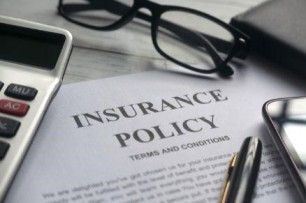
The updated terms and reforms in the insurance industry you need to be aware of
Every industry undergoes some reform from time to time. This can be due to various reasons- changes in the country’s economic conditions, level of crisis, the impact of international and national markets, contribution to the nation’s GDP (Gross Domestic Product), budget regulations and much more. Several types of insurance act as investment plans, help you in a financially stress-free emergency, provide tax-saving benefits, and ensure a secure future for your loved ones and dependents.
Does the insurance sector undergo changes and reforms on a large scale too? The answer is yes. The premiums, terms and conditions, age limits, benefits, renewal, etc., are reviewed and revised when needed. This ensures that the insurance matches pace with the current economic conditions, the situation in the market and the demands of an existing and potential set of customers. And if you are someone who has purchased insurance policies or is planning to explore your options in the sector for all the good reasons, you need to stay updated with the changes.
This blog will discuss the revised terms and reforms you need to be aware of in the insurance industry. So, let’s get started!
The pandemic caught the eyes of the insurance sector reforms:
The covid-19 pandemic brought the entire world to a very unexpected halt. Given the pace of development and technological advancement, the pandemic situation across the globe was beyond the people’s and government’s imagination. While people were under lockdown, several opportunities opened up, and many sectors, mainly fintech, saw massive growth. In the insurance sector, which is majorly categorised into life, health and general insurance, the FDI (Foreign Direct Investment) limit is increased to 74 per cent from 49 per cent as per the new Insurance Amendment Bill 2021 passed in the Indian Parliament.
This was primarily focused on getting more foreign investments onboard. Why? The insurance sector is considered a good investment option. It is a capital concentration with a long development period. It takes at least seven to ten years to start making profits apart from their regular budget, retention and expenditure.
What does the FDI reform ensure:
The FDI reform discussed in the previous point will open up multiple avenues for investment in the insurance sector. This will significantly aid them in growth and expansion, even overseas. The whole loop continues and might attract more foreign interests, thus helping them flourish economically, eventually providing new features and insurance options for the customers such as
1. Pay-as-you-use motor insurance plan has now been ideated into the motor insurance framework. This would enable the customers and policyholders to reduce their premiums as per reduced coverage by availing of the switching on and off options.
2. Health insurance plans have been customised to comprehensively understand the needs of people during stressful times of covid. The comprehensive health insurance policies have incorporated mental health issues, covid-19 problems, modern procedures and treatments, etc.
Health insurance providers have been permitted to raise or reduce the health insurance policy premiums by almost fifteen per cent after three years. This is considered a significant reform in the health insurance sector and the pricing of these policies.
Some other reforms were accomplished regarding insurance awareness programs to ensure that people from the remote sectors of the country know the benefits of insurance policies and can avail a secure future, introduction of digitalisation of KYC and verification processes for the convenience of the existing and potential customers, 24*7 online help assistants, etc.
These were some updated terms and reforms you need to be aware of in the insurance industry. Insurance coverages help secure a financially stress-free situation when you encounter unprecedented circumstances that can endanger your health, assets or life. So, a wise option would be to explore all your options from the comfort of your home and buy insurance policy online that would cater to your needs in the best ways possible.
Click HERE to know more about how you can buy insurance policy online.
Disclaimer: The information provided above is for illustrative purposes only. To get more details, please refer to policy wordings and prospectus before purchasing a policy.
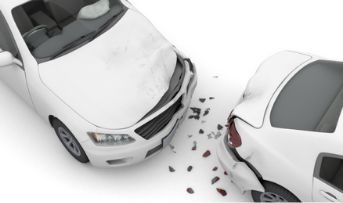
Know more about tailgating and ways to stop it
Have you ever been driving around and seen someone cutting it too close to your car's bumper? If yes, you are familiar with tailgating. For those unaware of the term, tailgating happens when there is insufficient space between your car and the one in front of you or behind you.
The likelihood of a collision increases with just one forceful brake from the vehicle in front. Tailgating increases the risk of accidents, making it essential for car owners to protect their vehicles. Also ensure that you avail of online motor insurance renewal services offered by your preferred insurer.
While insurance can help you safeguard your vehicle and yourself from financial contingencies, here are some tips to prevent tailgating.
What are the risks of tailgating?
A significant risk of tailgating is that drivers do not provide adequate space to stop if the vehicle in front suddenly decelerates which more likely makes a rear-end collision. A multi-car pileup that starts with one rear-end accident is expected to spread. Accidents involving a rear-end often result in neck and back injuries.
Another risk of tailgating is that it can create pressure on the vehicle's driver in front to apply the brakes to dissuade the tailgater. When the front driver performs what is known as a brake check, an impending collision may result if the foot is held down for even a brief period. In the worst case, brake inspections can also spark road rage among tailgaters.
Ways to prevent tailgating.
Driving too close to the car in front is the main reason for tailgating. Maybe you're upset or impatient and hurried. Whichever one it is, tailgating puts you and other drivers in danger every time.
Here are some tips to help you maintain a safe distance.
1. Understand the distances you often stopover:
The variation depends on how quickly you're moving. You might get into problems if you can't stop in this amount of time. Remember that stopping distances increase in wet circumstances, so be cautious and give the car in front of you enough room. You should raise the spacing by up to 10 times on slippery roads and at least double it in wet conditions.
2. Maintain your calm:
Avoid venting your frustration to other drivers if you feel irritated, furious, or exhausted. Stay at home until you feel better, or pause to unwind and regain focus before resuming your driving. It costs nothing to drive courteously and makes everyone's journeys safer.
3. Make use of your car safety features:
Nowadays, many vehicles feature collision warning systems that warn drivers if they approach the car in front too closely. Utilise such devices, but don't entirely depend on them. Always follow the road regulations rather than pushing your car's technology to its limit.
Driving is a skill that requires significant experience to master. Keeping calm and efficiently managing situations like tailgating is an indicator of an experienced driver. While you may not be able to control other drivers and their behaviour on the road, you can always ensure your vehicle's safety by following the above tips. Also, remember to avail an online motor insurance renewal service or purchase a new motor insurance policy to protect yourself from financial losses due to an accident.
Click HERE to proceed to online motor insurance renewal.
Disclaimer: The information provided above is for illustrative purposes only. To get more details, please refer to policy wordings and prospectus before purchasing a policy.

The best tips for choosing a cargo shipping company
A lot of stress surrounds the idea of getting your package shipped overseas. Knowing that your cargo will travel a long distance, you will want it to reach its destination safely.
While sending your package overseas, there are a few crucial things that you should keep in mind to save time and effort. The best thing you can do is look for a reputable and trusted cargo shipping company that will take care of your package. If you're sending a cargo for the first time, then there are several things you must know.
While you plan to ship your cargo, consider securing it with reliable marine insurance. For this, you need to be familiar with different marine insurance companies that offer this insurance at the best rates.
And to help you choose the best cargo shipping company, here are a few tips to make the right decision.
1. Competitive prices:
Pricing is one of the first things to consider when you choose a cargo shipping company. It would help if you did ample research about the average cost of shipping overseas.
In this way, the companies will not be able to scam you into paying more than usual. Consider a company that delivers on time and takes full responsibility for the goods to reach safely.
2. Delivery timeline:
The delivery timeline is also very important whenever you ship a package overseas. It can take days, weeks, and even months to reach your desired destination. Before you choose a company, enquire about their delivery timelines and make sure they are reliable and intact. The arrival of the package on the estimated date is significant.
3. Safety:
It is always wise to opt for a cargo shipping company that has been registered and procured a business license and permission from the concerned government authorities. Make sure to research it in advance, so you do not lodge yourself in a possible scam later. Try and track down customer reviews and feedback as well. Your package will be valuable and worth thousands of rupees. Safety is essential and it should not be compromised in any way.
4. Reliable insurance:
Your package should have good insurance to back up its security. Go for marine insurance companies that provide comprehensive and hassle-free coverage for your cargo package. This ensures that you get compensation, if things, unfortunately, go wrong.
5. Tracking:
Before you choose any cargo company, ask them about tracking mechanisms. In this way, you can follow the whole movement of your package through live tracking status. Your cargo shipping company should provide you with the tracking details. If it doesn't, avoid choosing that company.
6. Customer care:
Every cargo shipping company should have a functioning and active customer care service to answer all your queries related to the shipment. Make sure that you do a thorough background check on the company you are choosing. Select a company with an active customer service with 24/7 support.
When you invest your valuable time, effort, and money in sending the parcel to your family or friends, you always expect it to reach them safely and on time. These tips should be your priority when choosing a cargo shipping company for your goods. Additionally, it would help if you purchase insurance to cover the financial loss if your cargo gets damaged due to mishaps. Research the top marine insurance companies that offer relevant insurance for all your needs, compare their policies, understand the terms, and then make a final decision.
Click HERE to know more about marine insurance.
Disclaimer: The information provided above is for illustrative purposes only. To get more details, please refer to policy wordings and prospectus before purchasing a policy.

What is the importance of enrolling in a self-defence class
In a world riddled with war and crime, it is always good to know that if need be, you can defend yourself. With active crimes rising daily, it is best to have some tips and tricks under your belt to protect yourself and your loved ones. One way to ensure your safety is by enrolling in self-defence classes. There are various kinds of self-defence methods that you can practice, such as karate, krav maga, boxing, judo, etc.
Choosing the one that best suits you and piques your interest can make learning more enjoyable. People have professed the importance of self-defence for women and children, but what is important to remember is that self-defence is for everyone.
This article will examine the importance of self-defence classes and why you should consider enrolling in one.
1. It helps your physical form:
One of the most crucial elements of self-defence is timely reflexes. If you are put in a dangerous situation, your mind and body should manage to work in sync. You can only achieve this with practice. Training can help you inculcate the necessary conditioning and helps you with a better fight or flight response.
Your body prepares for an adrenaline dump with the right amount of practice. Adrenaline dump is a reaction the body goes through in case of unprecedented dangers. Since the adrenaline rush lasts only a few moments, it is crucial to act immediately for the best outcomes.
2. Builds confidence:
When people are timid, they tend to undermine their skill set and are incapable of protecting themselves. Self-defence is an excellent way to build confidence and protect oneself in times of need by believing in their skill set.
Being confident helps you defend yourself and leaves a lasting impression on people. If you are aiming for overall development, self-defence can be extremely helpful.
3. Master discipline:
Excelling in any field requires hours and hours of hard work and dedication. The same applies to self-defence. The more hours you put into mastering this art, the better you will get the results.
The urge to improve yourself can drive you to a dedicated routine, which builds a disciplinary lifestyle. So, taking self-defence classes helps you stay focussed, grounded, and more aware of your surroundings.
4. Fighter instinct:
When faced with life-threatening or dangerous situations, it is best to start acting as early as possible. The quicker you are with your thinking, the sooner you can fight through your opponent or potential threats.
The power and the speed of your attack will help buy you some time before the attacker attacks again. You can utilise this time to escape or attack the opponent to keep yourself safe. These seconds can play a vital role in deciding your survival.
5. Makes you more goal-oriented:
Your goals at any particular time can be as small as achieving the perfect kick or as daunting as escaping a kidnap. Upon seeing an improvement in form, you only want to better yourself and make yourself well equipped to withstand any attack. Setting these small goals can significantly impact your form and energy.
These are a few reasons self-defence should be a part of everyone’s life. If you have children, it is best to give them an early start. We are constantly surrounded by news of mugging, killing, robbery, and kidnapping. Preparing yourself and your loved ones for any such thing is the best way to ensure their safety and welfare.
Another crucial way to ensure full protection for your family is by enrolling in personal accident insurance India. Personal accident insurances are the much-needed safety net that gives fruitful results during emergencies. Your insurance provider will help you financially to avoid an unnecessary burden on your shoulders to deal with the situation.
Click HERE to buy personal accident insurance India.
Disclaimer: The information provided above is for illustrative purposes only. To get more details, please refer to policy wordings and prospectus before purchasing a policy.

Best tips to look out for affordable health insurance for critical illness
Critical illness insurance covers serious health conditions that require expensive and long treatment. Such illnesses include cancer, paralysis, stroke, organ transplant, heart attack, coma, etc. The treatment for these illnesses can drain your savings and negatively impact your financial condition.
The recovery is time-consuming, beginning from the detection phase to a myriad of medical tests to surgery and then gradually returning to normalcy. All this will cost us much more than any normal health insurance coverage. This creates the need to have dedicated insurance cover for critical illnesses that are affordable and provide robust protection.
Let us look at the best tips for affordable health insurance plans for critical illness.
1. Comprehensive critical illness insurance policy:
A comprehensive critical illness insurance policy gives us a lump sum amount after we submit the required documents to the insurance company. You can use this sum to pay for the treatment cost, including diagnosis, hospitalisation, any surgery in the process, and the doctor's fees. The sum assured under such policy is fixed. Hence, you can plan your insurance coverage as per your specific needs.
2. Buy it as a rider:
You can buy a critical illness insurance policy as a rider to your existing health insurance policy. Hence you will not need to buy a new insurance policy to get this cover. Also, try to get this additional coverage in the health insurance policy provided by your employer to save money.
3. Low cost:
A critical illness insurance policy does not cost us a very high premium. The premium for such policies is much less than that for your regular health insurance. However, these covers provide us protection only for specific situations. Hence, they should never be used as a substitute for your regular health insurance policies.
4. Compare the premium charged:
Always compare the premium charged for critical illness insurance policies of different companies and select the most affordable one. You can do a detailed online search instead of visiting every insurance company's offices individually.
5. Check for the exact inclusions:
Always check the features and the exact inclusions of the policy because they may vary with every insurance company. Do thorough research and list what the policy does not cover. For example, your policy may state that it covers cancer. But it may also be mentioned in the fine print that it will provide a cover for cancer only after it reaches a certain level of severity.
6. Waiting period:
Look for a policy with the least waiting period. Usually, you can raise a claim for a critical illness after 90 days from the date of commencement of your policy. If you have a pre-existing major disease, the cover may start as late as 48 months from the commencement of the policy.
7. Age limit and benefits:
Always ensure the age limit until your policy provides you with insurance coverage. This will be helpful to you when you cross 60 years of age. There are some companies that provide a lifelong cover. Hence, it is advisable to choose such plans. Also, you should assess the benefits of your policy, such as NCB (No-claim bonus), in case you do not make any claim in a year.
Critical illnesses can result in the loss of your job, partial or permanent disability, and leave you with no source of income. The high cost of treatment can result in draining your pockets as the coverage provided by standard health insurance policies is insufficient for such misfortunes. The solution is to go for the best critical illness insurance policy available. The above tips can help you to choose the most affordable health insurance plans for critical illness upon which you can rely in times of actual need.
Click HERE to buy the best affordable health insurance plans in India.
Disclaimer: The information provided above is for illustrative purposes only. To get more details, please refer to policy wordings and prospectus before purchasing a policy.

The complete guide for people trying parasailing for the first time
Adventure sports have always been the best option for people who call themselves adrenaline junkies. They give you the thrill that knocks out your everyday life's monotony. There are different types of adventure sports, like river rafting, paragliding, bungee jumping, trekking, rock climbing, skydiving, and much more.
In this blog, we'll discuss parasailing, a sport that has created a special bond with adventure enthusiasts. Parasailing is an adventure sport that gives you the joy of sailing in the air while your parachute is towed by a motorboat or jeep. If you plan to enjoy this activity on your next beach vacation, consider this blog for an enjoyable experience.
1. The weather is an essential factor:
The parasailing conditions need to be suitable, and the timing of the day has an effect. Usually, a clear sky and a less windy time are preferred, so most people plan their parasailing trip in the mornings.
2. Get well acquainted with the equipment:
Knowing your parasailing equipment and its functionalities is a must. Even if you cannot understand the mechanics of the equipment in detail, you should be aware of the purpose of the essential tools which will keep you safe. The life jacket is provided to keep you safe if you need to land in water during emergencies.
The body harness helps keep you seated and is joined to the ends of the tow bar. The harness aids in eliminating your discomfort and helping you maintain a balance during sudden movement shifts. And the tow bar is attached to a parachute to help you glide smoothly and land without any significant danger.
3. Get complete information about the restrictions:
To restrict the risks to the bare minimum, the parasailing institutes set certain limitations regarding the prospective client's age, height, and weight for parasailing. These restrictions are also influenced by certain factors, such as the wind level. Still, you must check in with the guide who will help you to avoid any threats to your health and life.
The minimum age limit for the riders is usually around sixteen to eighteen years, and the minimum weight in case there are multiple riders is supposed to be about 150 pounds. But these limitations vary, so check this with your parasailing guide.
4. Your outfit:
Swimming-appropriate outfits help since they are snug and would help if you land in water or experience waves. But anything comfortable is a must, and the bottoms should fit you well so that you are focused on the experience and not distracted by the discomfort caused by your outfit. These experiences are not everyday things, so you better eliminate all sorts of discomfort, stress, and distractions to make the moment count.
5. Research the company:
Read the online reviews about your parasailing company/institute and check their ratings. You must go to the right agency with all security measures intact, trained professionals, quality equipment, and SOPs to take care of their riders. Always ask all the questions to clear your doubts before going in.
6. Carefully listen to the instructions:
Before they put the parasailing gear on, the guide will give you all the information you need, even though you are riding solo or with multiple riders. They will tell you the landing postures, which part of the equipment will help you ride low, high, turn, etc. Always ensure to clarify your doubts before you begin.
That was the complete guide for people trying parasailing for the first time. As we discussed, while adventure sports allow you to experience the unforgettable, they also involve a certain level of danger to your life. Therefore, browsing personal accident insurance plans as a mitigation strategy for unpredictable circumstances is essential. Choose the one that suits you best before planning your adventure trip.
Click HERE to learn how you and your friends can get personal accident insurance plans.
Disclaimer: The information provided above is for illustrative purposes only. To get more details, please refer to policy wordings and prospectus before purchasing a policy.

These are the signs that indicate the need to change the AC compressor
With the temperature rising continuously, it is becoming harder to eliminate using air conditioners in our homes, offices, malls, and even our four-wheelers. Imagining life without ACs can be daunting to sustain the heat. Remember that one day when you got into your car, and you realised that the air conditioner was not working? It did feel like you would melt away. Winters are still a bit bearable, but travelling during summers and monsoons without the air conditioner in your vehicle can be an awful experience.
So, how can you predict your car's air conditioner is wrecked? Which part of the air conditioner would you need to change, and how would you know? Don't worry. This blog will discuss all the symptoms of an air conditioner repair.
But first, let's understand a little about your car's air conditioner's compressor:
The compressor is considered the central organ of the entire air conditioner system. Call it the AC's heart, if you will. It helps ensure that the refrigerant is flowing smoothly, which would provide the top performance of the air conditioner. Usually, an issue with the compressor results in low-effective cooling. And not just that, it can be quite dangerous if a compressor has some fault and there's a specific load on the air conditioner. We need to be aware of these signs that indicate the need to change the AC compressor.
1. Low cooling issues:
The first and the only sign you can quickly notice is the level of cooling. Having experienced a smooth performance from your four-wheeler's air conditioners on your trips to the market or work, you will be able to differentiate when the cooling is not that effective. This marks that the compressor cannot regulate the refrigerant flow smoothly, thus needing a replacement.
2. The annoying noise:
You might hear a loud, irritating and unusual noise whenever you switch on the air conditioner in your car. To address the issue, it is usually advised that you replace the entire cooling unit with a better and more compatible one for your car's manufacturing and other systems. Ensuring that your new unit is consistent with different electrical setups in your vehicle will help you avoid any damages that can endanger the car's safety, void the warranty of various systems, and violate the rules and regulations.
3. Clutch troubles can be experienced:
Faulty air conditioner compressors can cause issues with the clutch. It might seize or break, which ultimately indicates a power issue, and the compressor cannot access sufficient power from the engine.
4. Check the air vents:
Even if the compressors of the cooling unit of your car are faulty, you still need to ensure whether or not the air vents are clear for the air to flow without any obstructions. Clogged air vents can cause a disturbance in the smooth airflow from the air conditioner, thus lowering the levels of effective cooling inside the car. Clean the air vents and check again. If there is still an issue, the air conditioner's compressor must be checked thoroughly and replaced.
5. Fuse box examination:
Before deciding to go ahead and replace the compressor or the entire cooling unit, check the fuse box properly. While a faulty compressor is the cause of leaks in a refrigerant or low cooling, examining the fuse box leaves you with no second thoughts about changing the compressor.
Replacing the entire cooling unit and other repairing and servicing costs can be a substantial financial burden, even more so when you land in unfortunate circumstances that might cause severe damage to your car. Get a car insurance to avoid financial stress and ensure the longevity of your four-wheeler. You need the best car insurance which would serve your needs in the most efficient ways. Explore your options and do not delay buying reliable insurance to safeguard your asset against unfortunate events.
Click HERE to know more about the benefits of car insurance.
Disclaimer: The information provided above is for illustrative purposes only. To get more details, please refer to policy wordings and prospectus before purchasing a policy.

Guide on single-lane driving for beginners
Learning a new skill and mastering it can be challenging and time taking. The same applies to car driving. Beginners first need to understand the various functionalities of a car. Then they take time to build and sharpen their road sense. Furthermore, they need to constantly practice to hone their driving skills.
However, driving on a single road can be a new game for many. Beginners will especially face challenges adjusting themselves to the single road. If you are a novice driver and wish to learn the tips to drive efficiently on a single-lane road, here's our guide to help you get started.
1. Acquaint yourself with the car:
The first thing any beginner should do is thoroughly acquaint himself with his car and its features. Cars have different gear patterns, and the responsiveness of the clutch and brakes also differ from one car to another.
Single roads usually have much heavier traffic than double-lane roads. A beginner should understand how his car responds with the press of the accelerator, brake, and clutch. Applying all three must happen in a rhythm. This understanding is essential to help beginners drive and maneuver their cars effectively through the traffic and potholes on single roads.
2. Traffic rules and road signals:
A beginner should familiarise himself with the prevalent traffic rules. This will help you save money by way of fines and penalties. You should also be familiar with the different signals and signboards put along the roads and indications used by other drivers. If speed breakers are approaching, you should lower your car's speed by seeing the board of "speed breakers ahead" on the roadsides.
Also, you should know that if a vehicle approaching you on a single road is flickering its headlights, it means that the driver wants to pass first. These factors will avoid unnecessary traffic jams, inconvenience, and the possibility of an accident.
3. Correct seating position:
You should adjust your driving seat according to your height and comfort. You should be in a comfortable position to easily access the car's pedals. Also, the seating position should help you maintain good posture so that you do not develop strains or backaches while driving through the busy single lane.
4. Slow speeds:
As a beginner, you should avoid driving fast or carelessly. Slow driving on a single road will ensure you fully control the car. Generally, the traffic in peak hours on a single lane is heavy, so drive with caution. Always Keep your eyes peeled to help you reach your destination safely.
5. Maintain safe distance:
Maintaining a safe distance from the car or vehicle in front while driving on a single road is essential. Due to the heavy traffic, vehicles brake suddenly on such roads. There will be no space to swerve and change lanes on a single road. Hence, the chances of an accident increase.
6. Take a double-lane road where possible:
As a beginner, you should always look for an alternative way to reach your destination by taking double-lane roads wherever possible, even if you have to cover a few extra kilometres.
7. Avoid driving at night:
Beginners should avoid taking a single road at night unless it is very necessary. This is so because the beam light of the car coming from the opposite direction often makes it difficult for beginners to see clearly. This problem is more severe on single roads as the space between cars is very less.
Summing up the entire discussion, we conclude that beginners should tread with extra caution while driving on single roads in India. People tend to drive as closely as possible to other vehicles in traffic, which can be troublesome for beginners. Fret not! Follow the above tips and be confident in your driving skills, practice traffic rules, and maintain lane discipline.
It is also essential for you to have valid car insurance as it is mandatory by law. Secondly, a good car insurance India plan will protect you against any possible damage while driving and compensate you for the repair and maintenance of your car.
Click HERE to buy a reliable car insurance India policy.
Disclaimer: The information provided above is for illustrative purposes only. To get more details, please refer to policy wordings and prospectus before purchasing a policy.
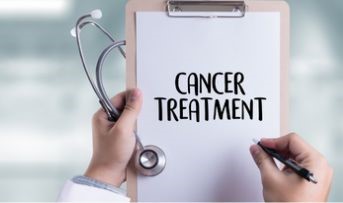
Consider these factors while purchasing cancer health insurance
Cancer is one such illness that affects the patient and their family emotionally and mentally. According to recent studies, cancer rates are alarmingly increasing day by day. It can happen to anyone, irrespective of age, health, or lifestyle. Keeping these increasing numbers in mind, getting health insurance to manage expensive cancer treatment is ideal. Moreover, many insurance companies offer easy and quick health insurance policy renewals to avoid complications and get you financially protected.
Factors to consider when purchasing a cancer health insurance.
There are a lot of insurance plans in the market, which makes it confusing to find the right insurance company. It is important to purchase the right policy that matches your requirements to get the desired benefits in the event of a need. Understand that not just buying but timely cancer health insurance policy renewal is the best way to remain financially protected.
1. Type of policy:
Look for insurance policy features that specifically meet the needs of life-threatening diseases like cancer. You can also buy a cancer coverage add-on with your original health insurance policy or opt for the critical illness insurance policy that covers expensive medical charges.
2. Policy coverage:
Cancer treatments can jeopardize your lifelong savings. While some people can bear these expenses, some take out heavy loans to cover them. Thus, choosing a maximum sum assured and policy coverage is ideal. Also, look for an insurance provider that offers quick and hassle-free health insurance policy renewal.
During the critical cancer stage, you may be unable to work and provide income to the family. Therefore, ensure that your plan offers sufficient money to cover your lost income and medical expenses.
3. Waiting period:
Keep in mind that every health insurance plan comes with a waiting period. The waiting period for a particular disease can differ from one insurer to other. You may not be able to claim the medical expenses till your policy comes into force. Therefore, look for policies with shorter waiting periods or quick health insurance renewal to avoid increasing costs.
4. Prior medical history:
You may not know, but most insurers do not offer cancer coverage to those with a prior cancer history. Thus, if you have already survived cancer, your application has a chance of being rejected by the insurance company. Thus, disclose all health-related information with the insurance company when you buy a health insurance policy or consider health insurance policy renewal.
5. Insurance company:
Besides looking at the policy offerings and benefits, choosing the right insurance company is essential to ensuring a smooth purchase and claim settlement experience. It is recommended to check the insurance company's online reviews, customer support, claim settlement ratio, etc., and then choose the best policy.
6. Premium:
Another important factor to consider while purchasing cancer health insurance is the insurance premium. An insurance broker may offer maximum benefits, but if the insurance premium is out of your budget, all of these things do not matter. You must think twice before purchasing or considering health insurance policy renewal if the premium is out of budget.
While many want to avoid such dreadful illnesses, preparing yourself and your family for the worst is always a wise decision. Therefore, purchase or ensure regular health insurance policy renewal today to secure your tomorrow.
Click HERE for health insurance policy renewal.
Disclaimer: The information provided above is for illustrative purposes only. To get more details, please refer to policy wordings and prospectus before purchasing a policy.
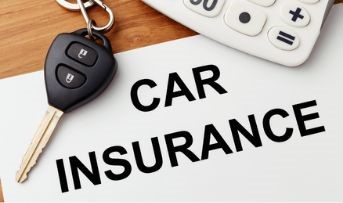
Here’s why the least-priced car insurance may not be a worthwhile investment
Imagine you're out with your car for some work, and suddenly another over-speeding vehicle rams into your car from behind. A scary situation, isn't it? Worrying about the damages is not a concern if you have the right protection. Car insurance is the immediate step you should buy to ensure that you are compensated fairly and stay financially stress-free.
When you begin choosing insurance from the options available, you always look for competitive premiums which are affordable and fully effective. Although you can get substantially low car insurance policies, you will not be able to enjoy all the benefits and features.
Let's have a detailed look at why you should not opt for the least-priced car insurance.
1. Unavailability of essential benefits:
The least-priced car insurance often strips you of the major benefits. Not all expensive insurance policies need to offer you all the benefits, but the least-priced ones offer you none. For instance, it may not even cover accident costs if someone else is driving the car at the time of an accident. Some insurance companies very cleverly offer you a low premium to attract you to their insurance policies. You must properly inspect your policy before determining the one you want to buy.
2. Impacts policy coverage:
The cost of the car insurance policy is directly proportional to the level of coverage it provides. If your insurance is cheap, the coverage will be lower too. There might be third-party insurance involved, which requires the protection against damages to the third party. You can be accountable for major crises in terms of losses or damages.
3. Lack of cashless claims:
If your insurance policy is cheap, you may not be able to enjoy cashless claims. This means that you will not be able to avail the facility of getting your car repaired in a garage that falls under your insurance. Under other circumstances, you will not be required to pay any money from your pocket. But with cheap car insurance, you are forced to pay for the damages before you apply for a claim.
4. Unsatisfactory customer service:
It is a known fact that the reputed insurance agencies ask you for a premium which is justified. This means that you will receive top-notch and priority treatment as a customer. You will be given the best support and care by the customer service of your designated insurance company. They will pay attention to all your complaints and resolve them on priority. In the case of cheap insurance, you will face unsatisfactory responses to your queries. Always keep that in mind.
5. Greater deductibles:
A deductible is a partial amount paid by the policy owner during the settlement of an insurance claim. With this feature in your car insurance policy, you need to pay a small deductible for your claim. However, for the least-priced car insurance, you need to pay a larger amount as deductibles. Only after the payment, you'll get the claim amount. This is how they loop you in for trouble. Always ensure that you read your documents carefully and ask all the right questions.
These points are enough to evaluate decently priced car insurance instead of a cheap one. Always make sure you explore all your options and purchase the best car insurance, which would cater to all your needs in the best way possible. By saving a few bucks today, you risk losing a lot of money tomorrow. Hence, choose wisely while getting car insurance to protect your car against hefty damages in unfortunate situations.
Click HERE to learn more about the benefits of car insurance and the process of determining the best option for you.
Disclaimer: The information provided above is for illustrative purposes only. To get more details, please refer to policy wordings and prospectus before purchasing a policy.

Are you an IT professional? Here's why health insurance is vital for you
The career prospects for IT professionals in the post-pandemic recovery provide immense opportunities in the fields such as eCommerce, Fintech, Artificial Intelligence, Augmented and Virtual Reality, and many others.
But with such a promising career option, IT professionals have high stress because of their work-related anxiety, strict timelines, night shift, and overwork load. It has become more about surviving as an employee and earning enough. And as a result, there are different impacts of such long work hours on their lifestyle. You begin to compromise on your health which is not a wise option. Being mindful of your health and preparing for the inevitable consequences would be best. Are you an IT professional? Let’s understand why it is essential for you to invest in a comprehensive health insurance plan.
1. Impact on your lifestyle:
We have seen multiple headlines about people getting heart problems, backaches, constant headaches, eye problems, and joint pain at a young age. While some of such cases can be due to underlying genetic conditions and other reasons, a significant chunk of youth is still at risk due to developed lifestyles. The stress levels you operate at, the pollution, the food you eat, work schedules, sleep cycles, undisciplined workout routines, excessive gadgets use, etc., are a few causes of your sedentary lifestyle.
Getting health insurance will allow you to cope with any repercussions you might face due to such a schedule. It helps you stay prepared and cover all costs of routine health check-ups. This way, you can stay informed about the fluctuations in your body and take appropriate and informed measures to solve the issue.
2. Fluctuations in the medical industry:
Inflation comes in all forms, and its effects do not spare any particular industry. The pandemic was an evident example of how the medical industry was on its toes and the primary source of survival. The advancement in technology has brought several developments in the medical world.
But this also ensures that the costs of treatments will rise depending on the level of equipment and machinery, accessibility, and the procedures involved. Even the basic expenses such as tests, consultation charges, ambulance costs, etc., will rise significantly. Getting health insurance will help you cover these costs for a more extended period to avoid the financial burden of being a salaried employee. This way, you can efficiently manage your finances and control your expenses simply by investing in a reliable health insurance plan.
3. Taking a step forward from the employee’s health cover:
Most companies offer insurance coverage for their employees and their immediate dependents, which assures that the employee has something to fall back on in case they find themselves in such medical emergencies.
But often, these insurance coverages are insufficient to cover terms of critical illnesses, the sum insured, add-on coverage options, or the time. In such cases, it is advised for you to purchase health insurance that has been customised according to your needs and provides coverage in every which way possible. This will always help you avail the benefits entirely at the right time.
Health insurance helps you safeguard your savings, and the earlier you get insurance, the more you can stay secure and ahead of such unfortunate situations. Explore all your options and purchase the best health insurance which caters to your needs in the best ways possible. Smart investments made during your 20s will help you reap the benefits at the need of the hour.
Always keep your policy up-to-date and adapt to practices like consuming a healthy diet, having at least seven hours of sleep, regular exercise for 10 mins, and meditating at home. At the workplace, take frequent breaks and stay hydrated to feel active and energetic throughout the day.
Click HERE to know more about the benefits of health insurance.
Disclaimer: The information provided above is for illustrative purposes only. To get more details, please refer to policy wordings and prospectus before purchasing a policy.

Does car insurance cover damages due to firecrackers? If so, what's the process
Diwali is a time for festivity and celebration. Everyone celebrates it differently; some will enjoy barfis and ladoos, some play cards, and others set off fireworks. While bursting firecrackers is often frowned upon due to the damage caused to the environment, it is still prevalent among a part of the population.
In addition to contributing to pollution, fireworks can be a nuisance to the general population. Imagine the days when you thought a rocket would invade your home.
When you feel frightened in your residence, how do you feel about your parked car in the building or on the road? In a space-constrained city, it is not uncommon for individuals to park their vehicles on the street. Therefore, disregarding the danger of stray crackers inflicting damage on your vehicle during Diwali is impossible.
If your car catches fire by the crackers, will you get insurance? To file a claim, you must first determine whether the risk is covered by your car insurer, as only policyholders with comprehensive car insurance may be eligible to do so. Let's examine the process your car insurance provider might take in this situation.
Does car insurance cover firecrackers damage?
The answer to whether or not comprehensive car insurance covers damage caused by fire is "yes." This feature is subject to a few specific criteria.
For instance, if you have standard car insurance coverage that covers liability toward third parties, it will not cover the damage. However, if you have paid more and opted for comprehensive insurance, the policy will cover incidents of such nature.
You may get all the information concerning the terms and conditions of the plan from your insurance provider. If you prefer, you may look through the insurer's website, call them, or email them to express your interest in learning more about their car insurance policies.
Comprehensive car insurance coverage:
To address this question, it is necessary to take a step back and examine the concept of automobile insurance in India. According to India's Motor Vehicles Act, all vehicles must be insured to be legally driven on Indian roads. Vehicle owners must insure their vehicles with a third-party plan, which covers the owner's obligation towards third parties or properties harmed due to the covered vehicle.
With comprehensive cover, vehicle owners have access to the additional feature. This plan meets the necessary coverage standards (it contains liability coverage) and provides damage coverage. The insurance provider will cover damage to the insured vehicle, which is not the case with a liability-only policy. Comprehensive car insurance covers fire, theft, and natural disasters.
However, for a comprehensive plan, you must pay a higher premium. The compensation for such a plan varies depending on the insurer.
Therefore, it is essential to conduct research and compare plans before purchasing car insurance. The luxury of the internet and smartphones have simplified this process considerably. A few minutes are required for research, followed by quick steps to buy and review the policy's information, and that's it. It is so simple and convenient!
If you have a comprehensive car insurance policy, then you are eligible to claim on your policy. Your claim will be successful if your car catches fire due to firecrackers and the vehicle is damaged beyond repair. It will reimburse you for the total value of the vehicle.
It is vital to note that you may not have a valid claim if your car catches fire, and you can repair it for less than what would be covered by the comprehensive policy. So, this Diwali season, let's invite happiness with the joy of festivity and reliable insurance coverage.
Click HERE to buy comprehensive car insurance to protect your valuable asset.
Disclaimer: The information provided above is for illustrative purposes only. To get more details, please refer to policy wordings and prospectus before purchasing a policy.

Complete guide on getting your dental braces done
Getting energy from food may sound like a straightforward process. But during this process, you must ensure that your dental health stays at the top of its game. Healthy teeth are very crucial. Lack of a proper dental hygiene routine can lead to bad breath, gum bleeding, swollen gums, infection, yellow and brittle teeth, ingesting bacteria and germs, and much more.
What if your teeth are not growing in the regular order they should? There is nothing to worry about. This phenomenon of unorderly growth of the teeth or zigzag pattern of developing teeth is more common than you think. And braces are the best solution to this problem. It is a relatively expensive process. So, you need to be aware of this orthodontic process before you invest your money and go ahead with the rest of the procedure. Do you have doubts about whether or not you should go ahead and get braces? This blog is a complete guide on getting your dental braces done. So, let’s get started.
1. Understanding the purpose of braces:
Braces are one of the most convenient solutions when your teeth are out of their normal alignment. These braces are wrapped around the bone structure of your teeth and apply pressure on them. Eventually, the continuous pressure due to the braces changes the position of your teeth, bringing them into proper order.
2. Criteria for getting braces:
Do you need braces? Your orthodontist determines the answer to this question during your regular check-ups. They will answer all your queries and tell you if you require braces and what problems regarding your teeth the braces would sort out. They will perform a deep examination and inform you about your options, the type of braces that would fit your teeth conditions, and your budget. You can then have a clear conversation with them and determine the option which suits you the best.
3. Are there different types of braces:
To your surprise, yes! There are four significant braces: metal braces, ceramic braces, lingual braces, and Invisalign. Metal braces are the most basic and standard braces which fix your teeth with the help of dental cement. Ceramic braces are a little more convenient and pleasing to look at when compared to metal braces. These braces can be altered to the colour of your tooth enamel, making them less visible and helping you avoid being too conscious about them.
Lingual braces are hard to spot as they are attached to the backside of your teeth which also cause discomfort. But these help if you are too concerned about your appearance. And lastly, Invisalign is customised according to the size, shape, and structure of your teeth and jaw for the perfect fitting. These can help you escape the usual hassle of other types of braces during eating.
4. Frequency of check-ups:
While the whole process can take an hour or two but can differ depending upon the condition of your teeth. You will have to visit your orthodontist frequently to ensure that the braces are functioning correctly, adjusting well on your teeth, not causing any infections due to the material, etc.
Sorting a minor health issue can take considerable money and consume much of your time. But what happens when you land in situations beyond your control and can potentially hurt your health? How will you manage your physical health, mental health, and financial stress?
Getting health insurance is the solution to ensuring that you stay sane enough to manage the whole situation. And you can now do so from the comfort of your home and buy health insurance online. Look for dental insurance under the category and research the plan that will provide the best benefits.
Click HERE to buy health insurance online.
Disclaimer: The information provided above is for illustrative purposes only. To get more details, please refer to policy wordings and prospectus before purchasing a policy.

Tips senior citizens must be aware of to protect themselves from online scams
Online scams have been on a stupendous rise, mainly because of the easy availability of smartphones and internet services. People are increasingly falling prey to unreal promises of big rewards and prizes offered by online scammers working 24x7 and trapping innocent people into their nets. They intend to make quick money by cheating them. Senior citizens are often more susceptible to such frauds as they are unsuspecting and trust people more easily.
Here are a few tips that senior citizens must be aware of to protect themselves from online scams.
1. Educate them:
Senior citizens are usually less proficient with modern technology. Hence, they are at higher risk of being targeted by online scammers for revealing their credit/debit card numbers, passwords, CVV and OTP, etc. The first step is educating senior citizens about the clever tactics and strategies of such online scammers.
They will then know not to trust messages with promises to get a handsome amount as a gift or prize, unreal discounts on products, or share personal information about their bank accounts, insurance policies, enter their personal information into forged or phishing pages, etc. They must be informed that they should never click on any suspicious link or respond to messages from unverified and unknown people.
2. Call blocking:
Several applications are available that help identify the caller and automatically block calls from spammers. Senior citizens should install such applications on their mobile phones so that they know beforehand that the incoming call is genuine or spam. Also, they can block spammers on their phones so they will not be able to call or harass them.
3. Use social media wisely:
Senior citizens should use social media wisely. They should refrain from posting photos and updates that reveal their daily schedule and activities. Scammers often use information you share on social media as a tool to pose as you, befriend your friends and known people and ask for financial help from them. They should lock their profile photo so that scammers cannot impersonate them on social media. Also, they should only accept friend requests from familiar people.
They should always double-check before helping any person financially through social media connections. If they get a message from their friend or relative asking for help, they should call him personally to ensure that the request for help is genuine.
4. Ask for help:
Senior citizens should never hesitate to ask for help from others if they feel that they are being targeted or have become a victim of an online scam. Scammers are talented and may ask them to act quickly to benefit from the limited-time deal. Also, they may threaten them with bank account blockage or closure if they do not share their important card and bank details.
Senior citizens should call their family members immediately and tell the situation correctly. Also, they may contact the respective call centre to verify the claims of the scammer before acting on them.
5. Reliable anti-virus:
Senior citizens should use strong anti-virus software so that their device is not affected by viruses, malware or spyware sent by scammers or hackers. They must configure their devices to download updates regularly and install them to keep them up-to-date.
Senior citizens should be thoughtful and proactive to protect themselves from the menace of online scams. They should be aware of scammers active in the field of insurance, telemarketing, and banking, etc.
Senior citizens should opt for a theft protection insurance to cover themselves from such thefts and fraud. It will protect them against all types of theft, including fraud and embezzlement.
Click HERE to buy a theft protection insurance to stay protected from online scams.
Disclaimer: The information provided above is for illustrative purposes only. To get more details, please refer to policy wordings and prospectus before purchasing a policy.
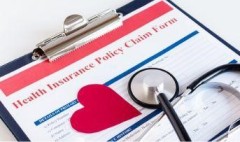
Do you have multiple health insurance policies? Here are some tips to handle them
Individuals nowadays may have multiple health insurance policies in the form of a corporate plan, a separate individual cover, a family floater cover, and a critical illness cover. The need for multiple policies arises because of rocketing hospitalisation and treatment prices in the present times. One policy may not provide adequate cover at the time of need. Also, when you leave your job, the corporate cover will end with it too.
It may confuse any individual to handle multiple health insurance policies, especially when raising a claim. Here are some tips for handling multiple health insurance policies.
1. Choice of policy:
When raising a claim, an insured has no compulsion to use any particular health insurance first from his multiple policies. You can choose any of your policies to raise a claim. Remember that you cannot file a claim for the same expense from two policies.
It is advisable to choose the insurance coverage provided by your office first. The claim settlement process will be quick without any waiting periods, and the chances of rejection of your claim will be very less. Also, your personal health insurance policy's NCB (No-claim bonus) will stay intact.
2. Room-rent limit:
Many health insurance policies come with a room-rent limit. Any extra room rent will have to be borne from our pocket. Hence, use the policy with a high room-rent limit first.
3. Co-payment or deductibles clause:
Many health insurance plans have a co-payment policy in which the insured has to take care of the claim amount. In deductibles, the insured must also bear a part of the claim amount, which the insurance company will reimburse. Hence, use the policy first, which comes without these clauses. This will not put any undue financial burden on your pocket.
4. Reimbursement limit:
Health insurance will cover your medical bills only up to the policy amount or the sum insured by you. If your medical bills are more than the sum insured, you can file a claim for the remaining medical bills with the second health insurance policy provider.
However, in this case, the hospital may not permit you to use the cashless mode to settle the remaining bill amount. You must clear the remaining bills and submit a reimbursement claim for your expenses with your second insurance provider. Also, you need to submit proof of the portion of the bill settled by the first insurance company along with the other relevant documents.
5. Raising claims with two insurers:
We cannot submit the same claims with two health insurance companies simultaneously. If the hospital bills are expected to go higher than the sum insured with the first insurer, then only you can ask for reimbursement for the remaining amount from the second insurer.
6. Disclosure:
We should always disclose our existing health insurance policy details to the insurance company while buying a second cover. Non-disclosure of previous policies with any health insurance service providers can lead to the rejection of our claim at the time of need. It will be considered a violation of the insurance contract.
Multiple health insurance policies are always beneficial for an individual. We usually get corporate cover as a part of our employee benefits, but it may not suffice. We should always go for additional health insurance coverage so that our existing coverage does not fall short in times of need. Also, specialised health insurance policies, such as critical illness policies, are always advisable and suitable for regular coverage.
Click HERE to buy the best health insurance policy.
Disclaimer: The information provided above is for illustrative purposes only. To get more details, please refer to policy wordings and prospectus before purchasing a policy.

Best hacks to make train journeys cheerful
Train journeys can be quite a daunting experience for inexperienced travellers. From bustling crowds on the train, the noisy co-passengers, and the hustle of vendors, it is an adventure all in itself.
The style of travel in the Indian railways greatly differs from other countries such as Spain and Japan since these trains cover longer distances with many stations to halt. Due to this slow nature, train journeys can sometimes get stressful and monotonous. This blog aims to change just that and show you how to make this journey exhilarating and cheerful.
1. Stunning views:
Going for a long journey across the country by railways gives you a glimpse of the best interiors of India. The extraordinary views of mountains, valleys, rivers, and deserts are all sceneries you might not get to see elsewhere. Even the stark differences between the noisy cities and the calm villages can be a mesmerising experience. Try to get a window seat to experience the countryside landscape.
2. Show off your photography skills:
If you're someone who loves to capture moments on camera, train rides are the perfect opportunity to take some swoon-worthy photos. With so many people around and several activities going on, train journeys have so much to offer. Make sure you keep the camera in an accessible range not to miss any memories.
3. Treats and snacks:
Flavourful food is part and parcel of India, and train rides should be no exception. Although the railways have their canteen, the food there might not be up to the mark in terms of taste. It's best to try out different snacks from each state you stop at. It is advisable to trust your instinct with the food, though, because having food while travelling doesn't suit all. Stomach problems are extremely uncomfortable during a train ride, so eat light and less oily. If you have a sensitive stomach, it's best to bring snacks from home to munch on.
4. Be prepared for friendly conversation:
Indians are some of the friendliest people on the planet. One of the most heart-warming experiences is to share life stories with varied people from all different cultures, states, and walks of life on the train. A quick game of cards or other fun activity can help you be friends with your co-passengers and pass your time cheerfully.
5. Books:
If you're not much of a conversationalist, it will be more enticing to take a book with you on the journey and read it as the train is hurtling down the tracks. Looking at the beautiful scenery outside and reading a book can be a meditative experience.
6. Carry your gadgets:
If talking to random strangers about their life does not sound like your idea of fun, you could plug in your earphones and get lost in that movie that you have been meaning to watch for a long time but couldn't get the time. Or you may close your eyes and listen to music that will keep you energetic and sane throughout the journey.
7. Catching up on sleep:
Sometimes, the one thing that gets ignored in the hustle of travel is a good night's rest. Get a comfy pillow and blanket with you and get your sleep. Better the sleep, the better you will be the next morning.
8. Have you thought about insurance:
Although train rides are safe to travel, emergencies and mishaps come uninvited. Investing in personal accident insurance plans is advisable to add a protection layer to your train travel.
Any traveller can attest to the fact that travel is an eye-opening experience. It allows you to broaden your mind and makes you privy to many new experiences. But safety should always be the topmost priority of any traveller. As the uncertainty can be stressful, rest assured by researching suitable personal accident insurance plans and travel without worries.
Click HERE to know more about personal accident insurance plans.
Disclaimer: The information provided above is for illustrative purposes only. To get more details, please refer to policy wordings and prospectus before purchasing a policy.

How can you benefit from buying health insurance online
A sound health insurance policy is paramount in the present world because health-related risks are constantly rising, and so are medical costs. You can buy a health insurance policy through the tried and tested method of using an agent's services or visiting an insurance company nearby your place of convenience.
However, did you know that we can benefit more from buying the best health insurance policy in India online?
Let us have a look at these benefits.
1. Multiple options:
This is one of the most important benefits of buying a health insurance policy online. You can browse a myriad of options a company offers and then compare it to similar policies of many other companies. Hence, you can shortlist the right policy meant for you based on the required coverage, benefits, and premium amount.
2. Convenience:
Imagine the hassle of visiting the offices of multiple insurance companies and going through the details of their policies sitting there! Buying a health insurance policy online saves you from this hassle and eliminates the involvement of intermediaries. You can conveniently go through various policy options online from the comfort of your home and with the convenience of completing the buying process in just a few clicks. It is easy, convenient, and accessible 24/7.
3. Cutting away middlemen commissions:
No middlemen or agents are involved when you buy a policy from online portals. Hence, online purchasing the best health insurance policy in India helps you save substantially on the premium amount.
Also, agents tend to put pressure on you to buy a particular company's policy to earn higher commissions on the same. Buying a health insurance policy online does away with this pressure. You can freely buy any policy of your choice after properly comparing available options.
4. Inexpensive:
Technology and automation help insurance companies operate online with less workforce and low administrative expenditure. Hence, they are in a position to save a lot of money on operation costs.
To encourage more customers opting online policies, a part of this saving is passed on to their consumers through lower premiums. Hence, the customers enjoy a lower premium than what offline channels offer. It is a win-win situation for both the insurance portal and the consumers.
5. Transparency:
Agents often hide facts and information about restrictive clauses in a policy, so you do not deviate from buying it. However, this is not possible when you buy a health insurance policy online.
Every policy has restrictive conditions about its coverage, claim settlement procedure, etc. You can go through the terms and conditions of the policy in detail on the portal before buying it. This will save you from a lot of trouble that may arise in the future due to incomplete information and hidden clauses.
6. No geographical barriers:
Buying a health insurance policy online helps to eliminate geographical barriers. You can select the best health insurance policy in India, even if you reside in any remote area or village, without the presence of the physical office of the insurance company. Hence, your choice is not restricted due to your location.
7. Time-saving:
Buying a health insurance policy online will help you save time. You do not have to take out time separately from your hectic schedules to meet an insurance agent or visit the offices of multiple insurance providers.
We can easily conclude that buying a health insurance policy online is better than buying it through offline channels. Buying insurance should look like an effortless activity with less stress about finding the right deal with multiple benefits. Be the decision-maker of your investment by opting for an online method of buying the best health insurance policy in India.
Click HERE to buy the best health insurance policy in India.
Disclaimer: The information provided above is for illustrative purposes only. To get more details, please refer to policy wordings and prospectus before purchasing a policy.
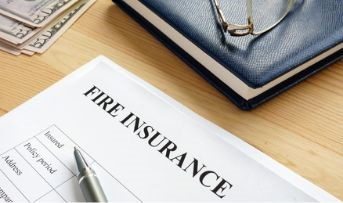
Let's understand the advantages of fire insurance for businesses
Running a business involves many uncertainties and risks, making it a venture challenging for every business person. While it provides multifold rewards for the resources invested into it, it also requires a lot of effort and time to scale your business. Until then, you must consider multiple factors at all times whose fluctuations may adversely impact the business operations.
The risk of mishaps outside the control of the management is a constant source of worry since the loss caused by such incidents is enormous. A business's most common threats are natural disasters, fires, and explosions, especially in manufacturing entities. While there is no way to eliminate such threats directly, a comprehensive and adequate policy purchased from a fire insurance company goes a long way in insuring your business premises and assets from the damage caused by such events.
Here is a detailed understanding of why you should purchase a fire insurance policy for your business and the advantages it provides.
What is covered under a fire insurance policy?
A fire insurance cover protects your insurable assets against more than just fires. It covers damages due to fires, natural calamities, lightning, fire explosions, aircraft damages, landslides, and bushfires. A closer inspection of your insurance will provide greater insight into the events from which your business is secured.
While the cover has several inclusions, it also has notable exclusions that you must know. Some excluded events are wilful fires, electricity leaks, fires caused by short-circuiting, war, etc. It is essential to check the fine print of your contract before signing it.
Who can purchase a fire insurance policy?
A fire insurance company offers insurance covers against fire to businesses of any size and scale, asset holders like buildings or furniture, holders of inventory stock like retailers, godown owners, manufacturing entities, hotels and lodgings, and any other service-providing institutions. This is an inclusive list covering any person, company, or business holding assets that require protection against fires.
Advantages of fire insurance.
Now that we know who can purchase fire insurance coverage and which assets it can protect, here are the advantages it offers business owners.
1. Loss against damage:
The effect of a fire is unimaginable. While it is a contingent misfortune, it is best to be secured against such an event, as the loss is far too significant for a business to bear. A fire policy covers the loss caused by fire to any movable or immovable property of the business, reducing the financial loss incurred by the enterprise.
2. Wide range of inclusions & add-ons:
Besides fires, most fire insurances cover other events to make it a comprehensive policy. They provide options to include add-ons to increase the coverage at an added cost.
The list of additional events as add-ons comprises earthquakes, forest fires, consequential loss of profits, rent, etc. At the payment of a nominal price, you can ensure that your business is completely secured against any event related to fires.
3. Ease of restarting business:
In the event of a fire, it is challenging for a business to cover the losses and continue its operations at its original scale. With adequate fire insurance, it is easier to cope with the aftereffects as the business only has to focus on its operations instead of worrying about replacing the losses.
Therefore, it is fair to conclude that purchasing insurance coverage from a fire insurance company protects a business in the event of a contingent fire, as the advantages outweigh its cost. You must also ensure that you install and regularly keep the fire safety equipment up-to-date at your workplace.
Click HERE to buy insurance from the best fire insurance company.
Disclaimer: The information provided above is for illustrative purposes only. To get more details, please refer to policy wordings and prospectus before purchasing a policy.

Here are some common yoga injuries and the ways to fix them
Yoga is considered one of the oldest forms of physical exercise in the history of the world. While its origins seem Indian, yoga is practiced globally by people of different ethnicities and cultures. It helps you keep your body flexible, develop a more robust immune system, and bring a certain sense of discipline to your life. The various asanas and forms in yoga ensure that your body and mind work synchronously. It also regulates low-stress levels, induces better sleep quality, decreases blood pressure, heals current ailments, and benefits mental health issues like anxiety, depression, and much more.
There are many advantages of inculcating the habit of practicing yoga daily in your lifestyle. But everything comes with its risks. You must strictly adhere to the methodologies and procedures while performing various asanas to avoid unwanted accidents. Lack of proper understanding and implementation of the instructions can cause more harm to your body than expected.
Here are some common yoga injuries and the ways to fix them.
1. Be careful about your shoulders and knees:
Some of the most frequent yoga injuries include repetitive stress in the shoulders resulting in strain, chronic pain, or dislocation (ball and socket joint issues). Although the latter happens in extreme cases, strain and chronic pain can cause massive discomfort in your day-to-day activities. The muscle injuries in the shoulder area can be caused by overstretching too.
2. Neck pain can be frustrating:
Yoga postures like headstands and shoulder stands can cause severe neck injuries if not performed carefully or under supervision. Such poses can even put your vertebrae under extreme pressure, eventually leading to excruciating pain, compression, and flexibility issues. You might also face joint issues and muscle spasms, which can cause soreness and problems with your neck movement.
3. Save yourself from back problems:
When done incorrectly, yoga can cause discomfort in your lower back. You might stress your back even more while performing your daily chores. This might substantially elevate your back issues, leading to pain, spinal cord problems, movement restrictions, hip issues, disc problems in worse situations, etc.
Since your lower back is connected to significant movements in your upper or lower body, even the slightest task, such as stretching, can become a huge pain point in case of lower back troubles due to yoga injuries.
Now that we have discussed some common injuries, let’s discuss how we can fix them. Avoid putting excessive pressure on your body to perform a particular yoga posture. While it is essential to push your body to its limits, you need to draw a line and understand when it’s time to pull back. Use blankets or a yoga mat to significantly reduce the pressure from your lower back during seated yoga positions.
Perform the yoga postures in stages, so you don’t end up overstretching your shoulders. Avoid pulling too hard and take a breather whenever required. You can wear kneecaps to support your knees while performing the asanas. Again, perform such postures in stages. Make your body familiar with the pressure you might experience. Always ensure to let your body a little loose once you are done with your yoga session. You should include warm-down exercises to relax your body after heavy yoga/workout.
We all understand the importance of yoga and how it helps us stay fit and healthy, thus paving the path for a smoother life. But certain situations are out of your control and can endanger your or your loved ones’ health. Purchasing health insurance is crucial to safeguard yourself against such circumstances and face the problem instead of worrying about financial distress. You can explore all your options available in the market from the comfort of your home with an array of digital options. You can buy health insurance online India to cater to your needs in the best way possible.
Click HERE to know more about how you can buy health insurance online India.
Disclaimer: The information provided above is for illustrative purposes only. To get more details, please refer to policy wordings and prospectus before purchasing a policy.

More information on health insurance terms while planning an organ transplant
Organ transplant is a process where we replace a malfunctioning organ with a healthy one from a fit donor. With the advancement of medical science and the introduction of state-of-art technologies, we can go for transplants of vital organs such as the liver, kidney, heart, etc. But these life-saving transplants come with heavy costs ranging between 1-2 lakhs to 30-35 lakhs of rupees!
Health insurance providers have started offering policies covering organ transplants to meet such heavy expenditures. You read it right! Let us look into such policies in detail.
1. Coverage:
Two parties are involved in organ transplants: the organ receiver and its donor. Health insurance companies will cover the cost of various tests, hospitalisation expenditure, cost of surgery, and other related procedures vital for an organ transplant of the receiver. However, there are restrictions on coverage with regard to donor expenses.
The insurance policy will cover the in-patient hospitalisation charges of the donor. But it does not cover expenses regarding medical screening, storage or transportation of the organ, and pre and post-hospitalisation charges that the donor may incur in the process. Coverage for the above costs is subject to the sum insured and cannot exceed that.
2. Types of costs:
You should be aware of the types of costs that you will incur during an organ transplant. The first cost to bear is organ screening. The hospital will check the condition of the donor's organ.
The donor will incur pre-hospitalisation costs for medicines and different tests. Then hospitalisation expenses, including room charges, doctor fees, nursing expenditures, etc., will be considered. Post all these initial formalities and screenings; the actual surgery can be performed.
Post-surgery complications often arise, and there might be a need to bear additional hospital and doctor fees, medical expenditures, etc. The donor's post-surgery expenses, such as doctor follow-up, medication, etc., are also to be considered.
3. Waiting and survival period:
A health insurance policyholder with organ transplant coverage cannot raise a claim for the initial few days after buying the policy. Such policies usually come with a waiting period of 90 days to even 2-3 years from the policy's inception, after which a claim for an organ transplant can be raised. This waiting time may vary from one policy to another as per their respective terms and conditions.
4. Guiding Act:
The "Transplantation of Human Organs Act (THOA) 1994" is the guiding act for all organ transplants in India. It guides the removal, storage, and transplantation process of human organs. Any health insurance service provider will not cover your organ transplant claim if it violates any of the provisions of this law. Also, your claim will be rejected if the organ transplant is done for commercial dealings or smuggling activities of human organs.
Saving a life by donating or receiving an organ is a fortunate incident, and having the right insurance plan can make the experience less daunting. We recommend that online health insurance is the best way to invest in organ transplantation coverage. Buying the policy online will allow you to study and compare various policies that provide such coverage per our convenience and requirements.
Organ transplantation is an expensive process, and making haste decisions can land you in unwanted trouble. Go through each policy's terms and conditions in detail before making your final decision.
You should also ask for a detailed break-up of the recipient and donor expenses from the hospital before going for an organ transplant. This will give you a fair idea of what expenditure will be excluded from your insurance policy coverage and what will be its financial implication.
Click HERE to buy an online health insurance policy.
Disclaimer: The information provided above is for illustrative purposes only. To get more details, please refer to policy wordings and prospectus before purchasing a policy.

How is AI set to revolutionise the car insurance sector
AI has evolved tremendously over recent years, and its impact can be seen in every sector of the economy. The car insurance sector is also touched by AI and is all set to revolutionise it. Data modelling and machine learning applications are changing the insurance process and customer experience. Its role is increasing in car inspection, claim processing, and car insurance renewal.
Let us see how AI is set to revolutionise the car insurance sector in detail.
1. Car Insurance renewal:
Policyholders must upload photos and videos of their cars from all angles on a cloud-based app. No human assistance is required in this process on the insurance company's end because of AI. Computers evaluate the condition of the car, quote the premium amount accordingly and process the renewal.
AI is helping companies to save millions of rupees as their manpower requirement for the insurance renewal process has gone down drastically. Also, it is helping to save a lot of valuable time for companies and customers by making the renewal process swift and streamlined.
2. Claim processing:
AI is also set to revolutionise the processing of claims in the car insurance sector. Currently, claim management and processing are primarily manual. It takes a lot of time and is prone to errors and inefficiencies. This process is known to eat up around 50%-80% of the revenues generated by premiums.
Machines and computers need sufficient learning data and algorithms to master claims processing. AI can be used for initial claims routing, thorough inspection, and assessing the nature of damage and time for repairs. It can save several hours in processing every individual claim.
More importantly, AI can detect fraudulent claims, a major revenue drainer for every insurance company. AI can help to detect out-of-the-ordinary behaviour and claims coming for processing, which sometimes normal eyes can fail to detect. Some AI-based applications are capable of running background checks on customers coming for insurance claims. The insurance company can assess the risks associated with a respective customer or business.
3. Telematics-based insurance plans:
AI has enabled car insurance companies to offer telematics-based insurance plans to their customers. A "Pay-as-you-drive" plan can be used to charge premiums for insurance plans according to the number of kilometres a customer drives over time. AI can also assess driving style and behaviour of the drivers and charge premiums accordingly.
Thus, AI can be a revolutionising tool for "Pay-how-you-drive" plans and help companies to offer sophisticated and need-based plans to their customers. Such plans can help an insurance company to increase its clientele and profitability.
4. Competitive premiums:
AI can be very helpful in tracking the premiums charged by competitors for their car insurance plans in real time. A car insurance provider can accordingly charge a lower premium or offer a better car insurance price in India to the customers and ensure that the do not go away to the competitors.
The adoption of AI by insurers will be an essential criterion for companies to bring down their car insurance price in India. The insurance companies will pass on the savings due to AI to their customers, who will eventually benefit. Companies that do not adopt AI in the near future will be laggards, and competition will take over them.
Click HERE to get the best car insurance price in India for all your needs.
Disclaimer: The information provided above is for illustrative purposes only. To get more details, please refer to policy wordings and prospectus before purchasing a policy.

Immediate steps you must take in case of identity theft
Personal information is an asset that one must safeguard at all costs. In the olden days, identity theft was limited to misrepresentation by misuse of a person's name and identity, but in the modern world, its implications are far more severe.
In the era of digitalisation, where a person's identity proofs are linked to their bank accounts and other financial databases, it is easy for a criminal to wreak havoc with a stolen identity. The most vulnerable personal identities generally stolen include social media accounts, PAN, Aadhar, email, and bank details.
While different kinds of thefts and infringements are often discussed, identity theft insurance in India is an under-discussed topic that few are aware of. It is essential to protect oneself from such contingent threats using adequate insurance. In the backdrop of a crisis, they play a vital role in recouping losses.
If you suspect that your identity has been impersonated, here are the steps you must take immediately.
1. Identify the violation:
The first step after discovering that there seems to be some misuse of your information is to determine the extent of unauthorised action. Once you have identified the broad area, which may be one of the following- credit, taxes, or government benefits fraud, amongst others, try to identify the source of misuse of information.
2. Notify appropriate authorities:
While you can trace the source of misuse by jogging your memory, it is often infeasible. Even if you can trace the origin, your immediate action should be to notify the concerned authorities of the fraud details. This means that there will be a different concerned authority to approach each type of identity misuse.
For example, you should notify the Department of Telecommunications if your documents have been used to register for a SIM card. For cybercrimes or online fraud, you should approach the cybercrime police department. Similarly, you should immediately notify your bank to stop the payments in case you witness any unauthorised bank transactions.
3. Identify the extent of the damage:
Once you have identified and reported the problem, it is time to find the damage incurred. You may simplify this by checking your bank statements and any financial databases by scrutinising any recent transactions that appear to be unordinary and unauthorised by you.
4. File for damages:
Once you have a general estimate of the amount of loss incurred, you can file a lawsuit under the existing laws in India that provide relief against such fraud after fulfilling the conditions. A lawyer's aid can help handle the case legally.
While these are the steps you can take after realising the theft of your identity, here are some precautionary measures to ensure that your confidential data is not breached.
● Never save passwords:
While saving passwords to your accounts provides convenience during login, it also increases your susceptibility to fraudsters looking for opportunities to steal your information.
● Do not use unreliable sites:
One must always be careful when sharing basic details or banking information on any site, especially for new or unrecognisable sites. Do your due diligence before taking on such risks to ascertain its authenticity.
● Utilise multiple authentications:
Most sites now offer 2-factor and 3-factor authentication to secure your account. Ensure that you optimise such facilities to keep your accounts and data safe.
● Dispose of physical copies of identification:
It is common for most official processes to require the submission of physical copies of original identification records. Ensure that the printer and receiver get rid of the documents immediately after the official use if fulfilled.
● Purchase identity theft insurance:
While it is not so common, it is ideal to purchase theft insurance in India to protect yourself from identity theft in case the need arises.
The constant development of technology brings convenience to our lives while opening new windows for mischievous minds to scam people and make profits. Always have the mindset to follow the above preventive measures to minimise or eliminate identity theft threats. And don't forget to have the best theft insurance in India for your rescue if you find yourself trapped in a fraud or compromised identity.
Click HERE to buy the best theft insurance in India.
Disclaimer: The information provided above is for illustrative purposes only. To get more details, please refer to policy wordings and prospectus before purchasing a policy.

Post-marriage amendments to be made in your health insurance policy
Marriage is a monumental step in anyone's life. And if you have made this important decision and are going to or have recently got married, one of the essential things to consider is your and your spouse's financial security!
Since you intend to spend your entire life together, you must have adequate health insurance coverage. Consequently, reviewing and updating your health insurance plan after marriage is essential to ensure the best coverage for you and your new family.
1. Understand your new healthcare needs:
While your health insurance needs may change, it is best to have in-depth healthcare knowledge on what type of coverage would best suit you and your family. Nowadays, most plans include outpatient care, prescription drugs, and hospital or facility stays for a fixed premium. Sometimes, your coverage may include vision, dental needs, and even mental healthcare.
Suppose you have a specific need for any coverage or want to consult about the best options for your family. In that case, we suggest you seek help from your medical insurance provider and financial adviser. You can also surf the internet to gain a comprehensive understanding of all online health insurance policies.
2. Add your spouse to an existing plan:
If you are satisfied with your current health insurance plan coverage, you can add your spouse to your existing policy.
Whoever owns the policy can initiate this process by submitting the necessary documents (such as the marriage certificates and KYC documents for the new member, comprising evidence of identification, proof of age, and pictures) and completing the necessary form. The adjustment will also require changes in the policy premium for the newly added member.
3. Include maternity benefits under your policy:
Most health insurance policies have a maternity waiting period of two to four years. You can only consider obtaining the wife's maternity benefits once the waiting time is over. Therefore, if you don't include maternity benefits in your plan now, you will be unable to utilise them when planning a family.
4. More add-on covers:
As a result of the many changes that marriage entails, you and your spouse may want additional protection for your family. Now is the time to look into online health insurance add-ons that you can include in your coverage to make it more tailored to your specific requirements.
In addition to maternity insurance, you should think about purchasing a critical illness cover, personal accident protection, or a top-up cover. These are all powerful add-ons to consider. As some of these coverages may come with waiting periods, making the decision as soon as possible is crucial.
5. Choose the right insurer:
When you update your health plan or acquire a new one to meet your post-marriage requirements, it is recommended that you switch to an insurer that provides superior facilities and services to get the most out of your new plan.
Therefore, if unsatisfied with your current insurance provider, you may easily switch to a new and potentially superior insurance company. Look for an insurer that provides you with various rider coverages and benefits.
Marriage is one of the most critical decisions in your life, and you must handle it responsibly. You must have not only the coverage you need but also the coverage that is best for your family. By doing your homework and researching the best online health insurance options available, you can ensure that you will protect your family's health for years to come.
Click HERE to buy the best online health insurance policy.
Disclaimer: The information provided above is for illustrative purposes only. To get more details, please refer to policy wordings and prospectus before purchasing a policy.

How to take care of yourself amid changing seasons
Every season has its own character and is anticipated to practically play a hot-and-cold game with us. The seasonal changes sometimes make us feel a little under the weather. More illnesses, particularly colds, are frequently associated with this unpredictability of the temperature and weather. The main reason is that individuals often make the rookie error of becoming overly impatient and slipping into summer mode too quickly!
While there is no way to prevent falling sick during seasonal transitions, opting to buy health insurance online India and taking a few precautions can help you minimise the chance of developing common illnesses.
Five considerations as the weather begins to change are listed below.
1. Drink enough water:
Commonly prescribed for most health issues, drinking adequate water is essential, especially for staying healthy during the changing seasons. If you consume enough water, you can remove all the toxins from your body. It keeps your throat and nasal passages wet, preventing bacteria from having a chance to survive. To clear mucus from your body, you must also maintain a very high level of hydration. Therefore, consume at least eight glasses of water daily to maintain good health.
2. Avoid immediate cooling or air-conditioning:
Want to do it? It could feel warm sometimes in the middle of the season, and you might want to turn on the fan or use A/C. Subjecting your body to such abrupt temperature shifts can make you ill. A simple flick of the switch might result in several issues, ranging from a headache to a dry and scratchy throat.
3. Keep clad in cosy attire:
Giving up your cardigans and sweatshirts just yet isn't the best option, but losing a few layers is perfectly acceptable. Dressing in woollen clothes provides warmth and protection throughout the winter. Exposure and diseases like the flu might result from not wearing warm clothing. Even though the weather may be warm during the change of seasons, you need to keep yourself warm. It could make you sick to switch to summer attire so quickly.
4. Continue your exercise regimen:
Regarding exercise sessions, there are no excuses at all. You may have been sluggish throughout the winter, but you must start working out again, especially when the seasons change. Exercise enhances the immune system and promotes blood circulation, which can help you avoid illnesses. Physical activity can shorten the duration of the common cold, one of the diseases most closely related to the change in seasons. Consequently, put on your athletic shoes and get moving!
5. Keep harmful substances at a distance:
To deal with your flue like feelings, refrain from using harmful substances like alcohol, drugs, or tobacco. Although these could appear to make you feel better in the short term, they can make you feel worse over time. These substances increase your risk of getting sick.
Medical crises can happen at any time. You should immediately seek medical attention if you or any family member exhibit any sickness symptoms. Many symptoms, especially in youngsters and the elderly, are frequently dismissed as minor. This often leads to a minor issue snowballing into a significant illness that could have been prevented with immediate medical intervention. Instead of shying away from medical facilities due to the high healthcare costs, buy health insurance online India for yourself and your family to cover medical expenses.
Click HERE to buy health insurance online India.
Disclaimer: The information provided above is for illustrative purposes only. To get more details, please refer to policy wordings and prospectus before purchasing a policy.

Here is why too much sitting can be dangerous for your body
Regular office work requires prolonged periods of desk sitting. Because of this excessive sitting, people tend to get various health issues like obesity, diabetes and risk of some chronic diseases. This post will discuss how sitting all day at your desk can harm your health.
1. Sedentary lifestyles have become increasingly common:
People spend a lot of time sitting down, whether working, socialising, studying, or travelling. Whether behind the wheel, at a desk, or in front of the TV, most people spend over half of their day's hours seated. An office worker may sit for as much as 15 hours a day. However, the average agricultural worker spends less than three hours a day seated.
2. Calorie expenditure is reduced:
Calories are burned even while you're not exercising, just by standing, strolling, and fidgeting. This type of energy use is called non-exercise activity thermogenesis (NEAT), and not getting enough of it is a big reason people gain weight.
No significant energy is used up by sitting or lounging around all day. It has a significant impact on your ability to burn calories through NEAT. Research shows that those who work in agriculture can burn up to 1,000 more calories per day than those who sit at a desk.
3. The risk of gaining weight while sitting is higher than when standing:
On average, obese people sit for an extra two hours a day compared to their normal-weight counterparts. It has been shown that prolonged sitting throughout the day can cause weight gain and a number of other health concerns.
Obesity or fat accumulation can lead to increased risks of heart disease and also put pressure on other vital organs like the liver, kidney, etc. You may also experience early joint pain, stiffness of body parts, backaches, and reduced stamina and endurance due to inactivity.
4. Sickness is associated with inactivity:
According to an analysis of data on more than a million people, sedentary lifestyles are associated with an increased risk of severe health conditions, early signs of ailments like hypertension and diabetes in younger people, and even cause premature death.
An increased risk of type 2 diabetes by 110% and heart disease by 140% have been linked to a lack of physical activity over the long term. Research has shown that sitting for long periods or walking less than 1,500 steps per day can significantly increase insulin resistance, a significant risk factor for type 2 diabetes.
5. Even if you work out regularly, you still are at risk:
Even if you work out hard for an hour, sitting for the rest of the day is still bad for your health. It is important to take short breaks and keep the constant movement of your body throughout the day to avoid getting at risk of health issues due to lack of motion. Regular walking and exercises are necessary to keep your body in its best shape.
While taking breaks is crucial, indulging in physical activities at regular intervals of the day is equally important. Those who spend their days sitting at a desk can benefit from investing in a standing desk or taking frequent breaks to walk around the office. Cutting down on how much time you spend sitting is just as crucial for your health as what you eat and how often you work out.
It would help if you also buy health insurance to ensure you get the best care possible without putting a strain on your finances during the time of need. Rising medical costs force many to make compromise with the situation. You can purchase insurance from the best health insurance company in India, which will keep you secure in such cases.
Click HERE to get insurance benefits from the best health insurance company in India.
Disclaimer: The information provided above is for illustrative purposes only. To get more details, please refer to policy wordings and prospectus before purchasing a policy.

Tips for the best winter joint protection for the elders
The winter season is the perfect escape from the hot and humid climate. But what appears soothing to the youth can be troublesome for elders. Winter is a difficult season to withstand and maintain good health, especially for elders suffering from joint pain. This season comes with cold conditions, low atmospheric pressure, and dry air, making the muscles tight and rigid, which results in joint pain.
If you have elders at home and you're wondering how to make the winter season more enjoyable for them, here are a few tips for the best joint protection.
1. Move frequently:
The winter season makes elders lazy and feels less energetic. They avoid going out and prefer staying indoors, often sitting or lying on the bed to stay warm and cosy. However, they should avoid doing this as their body will become more rigid and joints achy.
Elders need to be active during the winter months. They may take up small household chores to keep their mind and body active. Even a brisk walk now and then inside the house will help. Frequent movement of the joints will ensure they are not jammed and do not ache much.
2. Regular exercise:
Elders should exercise regularly during winter to keep their bodies in shape and their joints in rhythm. However, they should take proper care while exercising and not overdo it as it can cause more harm than benefit. Light cardio exercises, yoga, and stretching can be helpful to keep the elders free from joint pain. Exercise can also help to cure existing joint pain, if any.
3. A restricted and healthy diet:
Winters are a great time for food lovers and munchers to grab quick bites while watching their favourite TV shows or movies. We tend to eat more which increases the sugar intake. This can negatively impact the body weight and invite unwanted health problems.
Elders need to restrict their diet and avoid overeating. More weight means more pressure on the joints, resulting in pain. Weight control will help them to keep their joint pain in control and keep other critical illnesses like heart issues, hypertension, diabetes, etc., at bay.
Moreover, they need to maintain a healthy diet. Food with anti-inflammatory properties helps to relieve joint pain. Such food includes nuts, seeds, fish, turmeric, garlic, onion, and dark green leafy vegetables.
4. Supplements:
Many supplements available in the market help reduce joint pain and stiffness. Elders may also opt for calcium supplements to make their bones stronger and healthier.
5. Dress-up adequately:
Elders should take adequate care while dressing up in winter. They should choose attire that will keep them warm at home or if they plan to go out. Good quality jackets and coats are a must while going out. Also, they should stock up on woollen gloves and socks to keep themselves warm. Adequate clothing will ensure they do not suffer joint pain even in the harshest weather.
6. Stay well hydrated:
We tend to drink less water and fluids in the winter than in the summer. Staying hydrated is very important for elders during winter. They should frequently drink water and even warm liquids such as soup and tea to feel energetic and fresh throughout the day. Proper hydration will help the body to maintain its temperature. Muscles will be more flexible, helping them to keep the joint pain in control.
Now we know how winter can directly result in joint pain, especially in the elderly. Following the above tips judiciously can help them to curtail or minimise it in the tough cold weather and create a comfort zone for themselves.
Similarly, you should consider the best health insurance in India for parents and elders at home. These plans are specially curated to minimise your worries about their health and medical expenses. Under all severe circumstances, a comprehensive health insurance policy will ensure the elders' well-being.
Click HERE to buy the best health insurance in India for parents.
Disclaimer: The information provided above is for illustrative purposes only. To get more details, please refer to policy wordings and prospectus before purchasing a policy.

How can general insurance be a crucial step to women's independence and financial freedom
Recent years have seen a rising number of women actively contributing in every sector. Whether police services, office-goers, or cab drivers, women are stepping out of their homes to build a future for themselves. Even with the ever-growing numbers of women workers, only fifty percent of women invest in general insurance as opposed to seventy-two percent of their male counterparts.
Why are the numbers so different? Although there has been a progressive shift in women's lives, general insurance was conventionally associated with the household males. During the earlier days, men were the sole breadwinners of the household and handled all monetary transactions. So, it was usually considered the males' responsibility to ensure that the family remained financially covered. This lifestyle trend has not been seen as evident as the societal change that women have faced.
This article will examine why general insurance is essential for women and how it paves a path to financial freedom.
1. Financial security:
It is important to remember that general insurance is an essential resource for the family. With more women actively contributing financially to their respective households, general insurance becomes an irreplaceable asset. It not only acts as a backbone to the family's financial stability but also provides tax benefits, adding more value.
In addition, general insurance covers many things, including travel, medical, artificial disasters, theft, etc. Therefore, general insurance is necessary for women to ensure their families' financial security if they become the household's sole breadwinner.
2. Financial independence:
Statistics show that most women, even when earning, depend on their spouses or family for financial knowledge. This is surprising in consideration of the rapid growth of women in all sectors of life. To combat this dependency and to be able to handle their own money, investing in general insurance is the first step. Taking care of your finances makes you confident and in charge of your own money without having to depend on anyone.
Having your finances sorted at every step will ensure that your children, parents, or spouse can have a comfortable lifestyle, safe and enjoyable vacations with no worries about lost luggage or cancelled flights, or you can visit the best hospitals without worrying about the bills going through the roof. There are so many advantages and benefits to favouring you.
3. Loans and debts:
Most households must rely on loans to pay for their houses, vehicles, and other significant expenses. In case of a mishap, general insurance will be able to help you cover the loss and ensure that you won't fall behind on your loan payments due to the distress of any emergencies.
4. Critical illness benefits:
Certain health conditions are specific to women, such as breast cancer, cervical cancer, etc. With an unhealthy lifestyle and heavy amounts of impurity in the food and drinks one consumes, these diseases have become a part of one in eight urban women populations. Comprehensive health insurance and critical illness protection can help you rest assured in case of such illnesses and cover the cost of the treatment.
These are just some of the many reasons women should invest in a general insurance policy. As mentioned, not only is it an intelligent way to secure your family's future, but it is also a way to ensure your financial liberty. General insurance is imperative to add value to your life and secure financial independence. As a responsible citizen, you should encourage fellow women to invest in general insurance India as the first step to their financial freedom and security. More power to every woman!
Click HERE to know more about general insurance India.
Disclaimer: The information provided above is for illustrative purposes only. To get more details, please refer to policy wordings and prospectus before purchasing a policy.
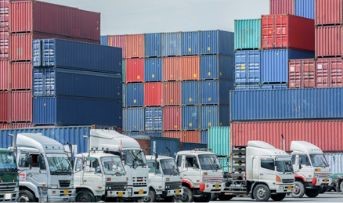
Here are the emerging trends of maritime logistics in India
The pandemic significantly impacted every business globally, and the maritime logistics sector was no exception. However, this industry will continue to grow as the supply and demand cycle returns on track post-pandemic.
Maritime logistics involve preparing, implementing, and managing goods and information necessary for ocean carriage. Transporting goods via the ocean route is profitable, but it still has some risks, such as the loss or damage of goods. Marine insurance is a must, as it covers damage that may occur during transit between the starting point and the destination.
With the insurance cover, you can safely run your business, but you will need to stay updated about the latest trends. Here's a list of a few logistics trends significantly influencing the industry.
1. Circular supply chains:
The pandemic made many business owners realise they had to change their approach to developing shipping routes. It helps many businesses develop an alternate, more sustainable supply chain model for future global emergencies.
Shortening the current supply chain structure reduces ocean transit time and allows the industry to adopt an eco-friendlier approach and thereby improving product longevity.
2. New methods for data collection:
Maritime logistics also helps researchers and scientists to provide crucial statistics and weather forecasts. The researchers collect data from ships travelling in different oceans in various regions worldwide to predict weather and make other observations to curate possible solutions for efficient logistics.
The pandemic had put a brake on logistics which caused a lack of data collection for researchers. This made it challenging for researchers to provide accurate weather forecasting and analyse other crucial statistics. Now, researchers are using new methods like marine weather buoys for precise weather forecasts.
3. Automation and Digitalisation:
Tech-based automation shows significance in every sector and a strong future scope. For instance, many warehouses adopt automated processes such as cargo handlers, stacking cranes, unmanned unloaders, and more to improve efficiency and revenue.
Technology also makes the documentation and paperwork process digital. The digitalisation helps boost the organisation's productivity by improving turnaround time and work efficiency. You can expect automation and digitalisation to be an integral part of maritime logistics.
4. Real-time data visibility:
Live location becomes popular demand from consumers and clients. Trading partners and customers expect updates on order locations. With supply chain visibility, business owners help monitor order shipments and provide the clients with updated status of their goods. Knowing the real-time status of your shipping enables you to ensure that your ship and the goods are safe.
5. Systematic policy response:
The pandemic also caused the necessity of a systematic global policy for the logistics industry. Many new policies emerged as the demand for more features and coverage for international shipments. The logistics industry can witness more emergency policy response that helps maritime operations to have resilient and agile transport systems.
6. Decarbonisation:
Carbon emissions have been a major global problem for the last decade. Logistics ships are the main culprits for heavy oil emissions. These days, the enforcement of controlled carbon emissions has become strict, causing maritime operators to opt for fuel-efficient routes. The IMO (International Maritime Organization) aims to reduce greenhouse emissions and the carbon emissions caused by shipping by 40% in the next ten years.
Understanding the demands of consumers and the need for technology in the logistics process is the need of the hour to strengthen the maritime logistics sector in India. Business owners must plan and implement new trends in their logistics businesses to create better growth opportunities. Shortening supply chains can help lower carbon emissions and benefit the environment. Similarly, it would help if you also considered getting marine insurance to provide reliable coverage against losses due to damage to goods during sea transit.
Click HERE to buy marine insurance.
Disclaimer: The information provided above is for illustrative purposes only. To get more details, please refer to policy wordings and prospectus before purchasing a policy.
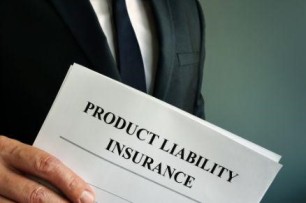
Let’s understand the benefits and use of product liability insurance
Let's say you're a washing machine manufacturer. Due to some defect in the formulae of chemicals used in the hose pipe of your washing machine, it is more likely to burst. The product has already hit the shelves, and you're receiving massive backlash for the damaged goods and might be at risk of a few customers suing you. This event can potentially shut down your business as you don't have enough capital to pay for the legal fees. You are incurring huge losses now as you have to take down the products from the shelves.
The only way-out would be an insurance covering you against these unforeseeable liabilities. The insurance that is suitable for this situation is product liability insurance. Product liability insurance protects manufacturers, wholesale and distribution businesses, and retailers against claims that the product they have sold has caused harm to a customer, including either bodily or property damage.
This insurance is helpful for all kinds of businesses. Taking the above example of the washing machine, the company should be insured with this type of insurance. This is because when a lawsuit is launched, an enquiry is made on all the companies involved. Small businesses need it more than others because they usually don't have the capital to pay the customer and can quickly go bankrupt.
This blog explains why product liability insurance is a must for your company.
Coverage for design defects:
Design defects can bother customers long after the product has been manufactured and sold off. The customer, in most cases, can still sue the organisation which manufactures the product. Product liability reimburses you for the expenses incurred due to such design errors.
Coverage for manufacturing or production flaws:
The most crucial feature of product liability insurance is that it provides coverage for any manufacturing defects that might cause harm to a customer.
Protection against packaging concerns:
Sometimes the manufacturer does not provide an adequate warning on the product package, such as potential defects, instructions for properly using the product, or some allergenic substances. One example is how beverage companies have to warn if it is hot and not to be liable if the hot drink is spilled on a customer. Additionally, if there's some substance like peanuts or other common inflammatory substances in the product and it's not mentioned clearly, the manufacturer might be prosecuted. Product liability insurance provides coverage for all these situations.
Supplemental commercial general liability coverage:
Product liability policies generally work along with commercial general liability coverage to provide the company with insurance against such claims by customers.
There are several reasons to take product liability insurance as a business owner. But the payout certainly depends on which kind of policy you've chosen. The insurance cost depends on various factors, including your industry, the potential risks associated with that industry, your business's claim history, and the insurance company's policy limits. For example, getting cover for risky businesses like alcohol, tobacco, and contraceptives is challenging because of the high rate of lawsuits that are usually launched against them.
Insurance companies may charge you a higher premium for such kinds of businesses. It's always best to be insured to remain stress-free. Business owners should also invest in public liability insurance policy to provide the best coverage to third parties in the event of financial loss, injury or death due to an accident.
Click HERE to know more about public liability insurance policy.
Disclaimer: The information provided above is for illustrative purposes only. To get more details, please refer to policy wordings and prospectus before purchasing a policy.
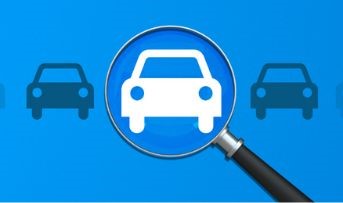
The reliability of car safety ratings and their impact on purchasing decisions
An important choice to make is whether to lease or buy a car. Before making a purchase, consumers should explore the options available in various models. The level of safety in a car is paramount. According to a study, sixty-five percent of buyers said safety is essential when purchasing a car, truck, or sport utility vehicle. Modern cars have more safety features than ever before, but not all are created equal when protecting their owners in an accident. Consumers now have easy access to reliable information through car safety ratings.
What factors influence car safety ratings?
Various government safety agencies and car crash test organizations publish their safety ratings based on controlled safety trials each year. They are mainly categorised as:
● The ability of a car to avoid a collision, in general, is known as accident avoidance. The effectiveness of several individual components is reflected in an accident-avoidance rating.
● Cars equipped with airbags are pre-programmed to deploy the airbags automatically in the case of a collision. They act as a buffer between the rider or passenger and the car itself, reducing the likelihood of catastrophic harm. Typically, front, knee and side airbags are standard in top-tier safety-rated cars.
● Anti-lock braking systems save lives by preventing the wheel from locking up when the brakes are applied. The car's traction is improved, and skidding is prevented. In areas of the country that get a lot of snow and ice, anti-lock brakes come in especially handy.
● A driver equipped with electronic stability control can quickly swerve the car without losing control to avoid an obstacle.
● Protecting your head, neck, and back from the painful consequences of a rear-end crash. Rear-end crashes aren't usually fatal but can cause serious harm. During rear-end collision testing, head restraints play a significant role. Safety professionals simulate these impacts to determine how well head restraints prevent whiplash and other neck and spinal cord injuries.
● Anti-rollover protection: Pickup trucks, vans, and SUVs are more likely to roll over than shorter cars because of their greater centre of gravity. Safety agencies also examine the anti-rollover protection capacity of a vehicle in their safety trials.
Buying decisions influenced by crash-safety ratings.
Crash-safety ratings show the typical outcomes from accident data and inform drivers about their and other cars' safety. Customers who are not car experts should read up on buyers' guidelines and all the specifics regarding the car they are considering, such as its crash test ratings, safety features, tools, and accessories. As the car is a long-term investment, every prospective buyer should pay close attention to crash test results.
Be a responsible buyer and never settle for less. Prioritise safety and consider it to be the most significant advantage as a driver. To sum up, crash safety concerns the danger of death or severe harm to the driver and passengers of the car in the case of a crash. Therefore, it is essential to have car insurance.
Overall, modern cars are safer for their buyers. Still, several aspects, such as the state of the vehicle, the surrounding terrain, and the driver's actions, have a role. Regardless of the safety features of the cars, whether you're shopping for a new or used car, buy car insurance online should be your top priority to ensure an extra layer of protection.
Click HERE to buy car insurance online.
Disclaimer: The information provided above is for illustrative purposes only. To get more details, please refer to policy wordings and prospectus before purchasing a policy.
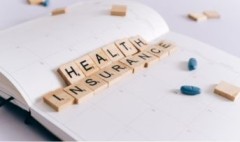
What to do if you miss declaring your health condition while buying health insurance
A health insurance plan is an effective investment instrument to protect your finances against severe illness or an unfortunate accident. But did you know that your health insurance covers pre-existing ailments such as hypertension or diabetes too? Yes, it does! However, this insurance plan has a higher premium and different waiting periods.
You need to ask your insurer about all the available insurance plans and tell them about your pre-existing conditions. However, if you fail to inform your insurance provider about your health condition at the policy purchase, you should learn what will happen at the time of claim.
What are the pre-existing diseases?
A pre-existing disease is a person's health condition or illness before the purchase of a health insurance policy. To simplify, a pre-existing disease is an illness that physicians diagnose within 48 months of buying the policy. Some of these diseases include cancer, asthma, diabetes, cardiac conditions, and hypertension.
Ask your insurance agent about all the pre-existing diseases they cover in their policy. Policies that cover pre-existing diseases have a waiting period depending on your age and plan. Remember that the policy will not cover your medical expenses if you fall sick due to your existing medical condition during the waiting period.
How can non-disclosure of pre-existing conditions lead to trouble?
Non-disclosure of pre-existing medical conditions can be one of the primary reasons for claim rejection. Suppose the insurance company finds out that the policyholder has been suffering from health conditions like sleep apnea over the past seven years. In that case, the company will reject the insurance policy even though they have never made any claim in the past 05 years of buying it.
If another family member is part of the insurance policy, they will also experience rejection or cancellation of it due to non-disclosure of your pre-existing medical condition. So, you need to be careful and transparent regarding sharing essential information with your insurance provider to avoid missing out on crucial benefits.
The insurer has a robust finding-out mechanism that helps them know about their customers' health conditions. A policy buyer may forget what they disclosed in the insurance plan, but understand that the insurer never forgets.
What to do if you fail to disclose your medical condition?
If you fail to provide information about your medical condition when buying the policy, you can rectify your error during the 15-day free-look period. However, suppose you miss this opportunity to correct your mistake. In that case, the company will treat your policy as void at the time of claim, and you will not get any compensation for medical expenses.
*Note
According to the moratorium rule of the Insurance Regulatory and Development Authority of India, the insurance company will not cancel your insurance policy if you have paid premiums for eight or more years.
Suppose you are unaware of your pre-existing medical condition when purchasing a health insurance plan. In that case, the plan will cover your illness and hospitalisation expenses by default. However, the insurance company will consider any illness contracted within 03 months of taking the policy as a pre-existing disease.
So now you understand why disclosing all the health conditions clearly when buying a health insurance policy is necessary. Opt for insurance that has a short waiting period. It helps cover your pre-existing illness at an early stage. And we advise you to purchase a health insurance plan at a younger age to avail of coverage in case a disease occurs.
Click HERE to buy the best health insurance for you and loved ones.
Disclaimer: The information provided above is for illustrative purposes only. To get more details, please refer to policy wordings and prospectus before purchasing a policy.

Here are some interesting facts about the Indian two wheeler market
Convenience is the need of the hour during the age of rapid growth. It is common to see newly developed inventions being phased out shortly after a better discovery is made that serves the purpose and facilitates the fast pace of human life. One exception to this general rule is the case of two-wheelers in the Indian automotive market.
Two-wheelers are inexpensive compared to cars, making them an obvious choice for the economically impoverished. On the other hand, with the increasing demand for convenience, vehicles on the road keep increasing every year, inevitably increasing traffic. The easiest way to navigate through traffic is by travelling on a two-wheeler, which makes switching lanes and parking relatively easier.
Even if you do not own a two-wheeler, it is an exciting product yet to reach its maturity and full potential. Until then, we can expect extensive developments to reform it into a futuristic commuting option. Simultaneously, as two wheeler insurance online gains popularity, enhanced safety of the riders can be ensured to minimise accidents and their financial burden.
If this is not enough to excite you about two wheelers, here are some interesting facts that will surely do the trick!
1. Rural areas drive demand:
Usually, urban demand for a product is expected to be greater than that from rural and semi-urban areas. However, while two-wheelers enjoy demand across the country, rural and semi-urban regions have continuous demand. About 50-60% of the 2-wheeler market is catered to rural areas. This demand is quite volatile as their income is comparatively low and susceptible to changes in prices of commodities like vehicles themselves or fuel rates.
2. Expected YoY growth:
Before the pandemic, the market for 2-wheelers was expected to grow at least by a prudent 10% each year. However, when comparing the sales of September 2019 and 2022, an evident exponential jump in sales has been noticed, proving its utility.
3. Hike in prices:
Since the pandemic, supply shortages have led to increases in raw materials prices, which have ultimately been passed on to the customers in the case of most consumer products. In addition, the consistently increasing production costs and the rising inflation rates have left two wheeler makers with no choice but to hike up vehicle prices.
This has been a significant factor that has made buyers hesitant to purchase two wheelers, as current prices are up by almost 15-20% compared to the pre-pandemic rates.
4. Gearless scooters see equivalent demand:
The ease of maintenance, relative inexpensiveness, and convenient usage make gearless two wheelers a popular option in India. It is common to see more and more gearless scooters on the roads, which speaks for its popularity.
5. Growth of electric scooters:
While the market is presently dominated by vehicles that run on fuel, a slow transition to electric vehicles has been noticed in cars and scooters. The total share of electric two-wheelers in the Indian market was around 3.5% as of July 2022, and the government has a vision of achieving 100% penetration by 2027. Although the numbers are minimal now, it shows the interest of the Indian consumer and the possibilities of the future.
The Indian two wheeler sector continues to grow despite all odds, some years at a slower pace than usual. While the vehicle provides convenience, it is essential to emphasise one’s security when riding a two wheeler and follow all necessary safety precautions. It is critical to purchase two wheeler insurance to prevent the financial strain any mishap may cause.
Two wheeler insurance online is a trending option that simplifies the process without having to leave the comfort of your home and provides an easy comparison between alternatives. With two wheeler insurance online, you get the advantages of affordable premiums, great deals, continuous customer support, and a seamless experience.
Click HERE to buy two wheeler insurance online.
Disclaimer: The information provided above is for illustrative purposes only. To get more details, please refer to policy wordings and prospectus before purchasing a policy.

Here are a few flammable items in your house that you need to be careful about
Fire in a house can be devastating and bring the entire house down to ashes in just a few moments. You need to be very cautious with the flammable items in your home as they can threaten your life, including your family and valuable assets.
A fire outbreak can be due to several reasons, most of which are beyond our control. Still, we can control the spread of fire, douse it with the help of fire safety equipment, and recover the damages with the benefits of buying fire insurance online.
Let’s first go through a few flammable items in our house that we must be careful about.
1. Hand sanitiser:
Hand sanitisers have become very popular in every household after the onset of Covid-19. People have started using it extensively at home and even advise their children to use it frequently.
However, very few people know sanitisers are highly flammable because they contain alcohol. You should never use sanitisers near a gas stove. Also, you should not carry a lighter with a sanitiser bottle in your bag as it can be dangerous and can catch fire.
2. Nail polish and nail polish remover:
We can find nail polish and its remover in almost every household in India. They are easily available in the market, and even children can access them. However, we must know that they consist of acetone, a highly flammable substance.
Even the vapour that they produce is highly flammable. Hence, we should keep both of them away from any source of flames, such as a candle or a matchstick at home.
3. Flour:
Surprised? Yes, the flour we use daily in our kitchen is flammable, especially flour dust in the air. Flour can burn easily from all sides. It allows flames to pass through it quickly because of its large and flat surface area. Hence, we should be careful when we use flour near the gas stove in the kitchen.
4. Grooming products:
Many beauty products we use frequently are flammable and can cause a fire in our house. Products like hair mousse and hair spray can ignite fire very quickly. Moreover, the fancy deodorants and air fresheners we use daily come in aerosol cans. Avoid exposing such cans to a naked flame, as they can quickly catch fire. You should also avoid keeping these cans at high temperatures as they can combust because of temperature and pressure.
5. Ghee and cooking oil:
Cooking oil has a low flash point, making it highly flammable. Similarly, ghee can catch fire easily, too, if overheated. You must be careful while using both in the kitchen.
6. Oranges:
Our favourite fruit, “Orange,” consists of an extremely flammable chemical called limonene. It is used as a fire starter for campfires and fireplaces. Hence, it can cause a big fire if exposed to an open flame.
7. Home mattresses:
We often light a candle on our bedside or even on the mattress. Smoking a cigarette while sitting on our bed is also very common. You should be aware that mattresses are highly flammable. They can result in the fast spreading of fire in a room because of their flat nature and big size.
We have seen that many items of our daily use are flammable and can spread fire in the house if exposed to even a small flame. The loss of property and lives can be irreversible and completely shatter our world. Fire insurance protects us against losses and damages to property caused by a fire at our house.
The cause of the fire can be electrical short circuits, gas leakage, or other reasons such as those mentioned above. Most policies will provide coverage even if the fire originates outside your house. Hence, think no further. Protect your house and property by buying fire insurance online today and enjoy complete peace of mind.
Click HERE to buy the best fire insurance online.
Disclaimer: The information provided above is for illustrative purposes only. To get more details, please refer to policy wordings and prospectus before purchasing a policy.

The most common headache types and their remedies
Headaches are the most common but often ignored problem that people face. Having a headache can dampen your mood and affect your concentration levels. They can be different and range anywhere from moderate to excruciatingly painful. The treatments for headaches can differ depending on the type and intensity of the pain. Although most headaches can be cured with rest and over-the-counter medicines, it is best to consult a doctor if the pain persists.
If you suffer from headaches frequently, this article will be a complete guide to discussing the different types of headaches and their treatments.
1. Cluster headaches:
A cluster of short yet excruciating headaches is called cluster headaches. They tend to happen periodically over years or months, or days. These headaches occur due to an affected trigeminal nerve, responsible for sensations of pain and heat in the face. The pain is concentrated on one side of the face starting from the head and branching out to the eyes and jaws.
These headaches last only a couple of hours and can be treated with painkillers and other preventative medicines. If you tend to have these headaches often, it is best to talk to your doctor and get a prescription for preventive medications that you can always keep on you in case of emergencies.
2. Migraine headaches:
Migraine headaches can show symptoms differently for different people. Sensitivity to smell, light, and sound accompanied by nausea is one of the most common symptoms of migraine attacks. These headaches stem from the nervous system and can sometimes affect your eyesight for a temporary duration of time.
Other symptoms include blurred vision, tingling sensations, and numbness on one side of your body. Aspirin, caffeine, and ibuprofen are some of the common over-the-counter drugs that can help in the faster recovery of migraines. Some home remedies include resting in a dark, quiet room, an ice pack on the forehead, and ample fluid intake.
3. Tension headaches:
As the name suggests, tension headaches or stress headaches are caused by persistent stress. The symptoms are less complex as compared to migraine or cluster headaches. Uneasiness, mild pain in the temple, sleep deprivation, and fatigue are some of the common symptoms of tension headaches. Poor posture, overexertion, and emotional stress trigger this kind of headache. Painkillers and sufficient rest can help you cure the pain instantly. However, if you face the problem often, it is best to seek medical attention and get any tests done if the doctor recommends.
4. Thunderclap headaches:
This is one of those headaches that might need immediate medical attention and can cause fatalities if not taken care of. These shooting headaches, nausea, and vomiting can often result from internal bleeding in your brain. The pain develops rather suddenly and lasts for about five minutes. Suppose you experience severe shooting pains or experience a new kind of pain. In that case, it is best to talk to the doctor immediately, as these are often indications of an underlying fatal problem.
These are some of the most common kinds of headaches that you might come across. Remember that no matter what, if the pain lasts longer and you experience bouts of shooting pain, do not wait for the pain to worsen. Contact a doctor immediately and get the required medical attention. After a preliminary round of tests and diagnosis, the doctor might suggest surgeries as a solution.
Under these circumstances, the cost of treatment can be very expensive. To safeguard yourself against these expenses, you can opt for an affordable health insurance plan for yourself and your family. A quick search on the internet shows many affordable health insurance plans that you can choose from. Take ample rest, have your food on time, drink plenty of water, and do 10 minutes of exercise daily to avoid the majority of headaches.
Click HERE to know more about affordable health insurance plans.
Disclaimer: The information provided above is for illustrative purposes only. To get more details, please refer to policy wordings and prospectus before purchasing a policy.
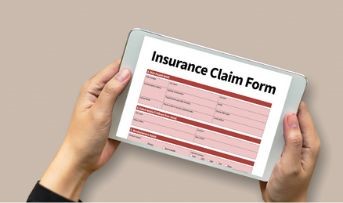
The best ways to increase your chances of getting a successful two-wheeler insurance claim settlement
Recent studies indicate that over 50% of vehicles on Indian roads are uninsured, of which two-wheelers make the majority. This is alarming considering the lack of safety features in two-wheelers and poorly maintained Indian roads, which lead to the ever-increasing number of road fatalities.
Despite making two wheeler insurance India mandatory, a vast majority continue to undermine its importance. This may be attributed to the financial product's complexity and uncertainties concerning the claim settlement process. While two wheeler insurance India protects against financial losses and damages from riding accidents, it is contingent on the claim's approval. Insurance providers have recognised the fear of potential policy buyers and have further simplified the process of raising a claim to increase penetration rates in the country.
Follow these tips to ensure the successful two wheeler insurance claim settlement.
How to raise successful claims?
This may come as no surprise, but the best way to raise a successful claim is to follow the insurance company's claim settlement process correctly. It is ideal for complying with the settlement procedure stated on the insurer's website to ensure favourable results. Most insurers have similar processes, which are reasonably straightforward to follow.
However, here are some tips to make sure that your claims are viewed favourably and settled at the earliest.
1. Early reporting:
Inform your insurer immediately after the accident. If you delay the process, you may forget the essential details required to validate your claim. Visit the insurer's website or call their toll-free number to raise a claim. If not possible, initiate the process within a week of the accident.
2. Proper surveying:
It is understood that an accident is a traumatic event to witness or be a victim of, irrespective of its scale. However, to successfully receive a complete settlement, you need valid and comprehensive proof to support your account. While details like the number plate of the other vehicle, pictures showing the damage, etc., are essential, any minute details can help solidify your stance.
3. Maintain precise post-accident records:
The most commonly accepted record by insurance companies is an FIR filed at the nearest police station to the accident site. Any medical expenses or bike servicing costs should also be recorded and submitted to the insurer for compensation.
4. Gather proof of following standard driving protocol:
An accident is an unfortunate event that cannot be entirely blamed on either party. While insurance companies look at the overall picture before passing a judgement on the case, you must ensure that you followed appropriate driving guidelines at the time of the accident. Here are a few reasons that can get your claim rejected:
● Riding without a valid driver's licence
● Riding with a lapsed two-wheeler insurance policy
● Riding under the influence of substances
● Reckless riding
● Use of two-wheeler for commercial or unauthorised use
5. Check your policy's inclusions:
Raising a claim requires knowing your policy's coverage to avoid rejection. You must know essential details like the authorised geographical region, active policy period, etc. Before raising the claim, ensure that you do not fall under any exclusions. Do not make false claims that you cannot support with evidence, as it automatically leads to rejection.
6. Provide all the requisite documents:
In case of incomplete submission of documents, you will have to duplicate efforts and submit the records until you satisfy the insurer's requirement. Usually, the list includes
● Copy of valid two wheeler insurance India
● Contact details of the policyholder
● Copy of FIR filed with the nearest police station
● Claim settlement form
● Copy of driver's licence and registration documents
● Original bills as proof of medical expenses and repairs
Two wheeler insurance India is a prudent mechanism to ensure protection against financial losses and damages to third parties due to your two-wheeler. Despite the general notion of the tedious nature of the claim settlement process, you can raise claims successfully by following above tips and simply complying with the insurer's requirements!
Click HERE to purchase hassle-free two wheeler insurance India policy.
Disclaimer: The information provided above is for illustrative purposes only. To get more details, please refer to policy wordings and prospectus before purchasing a policy.
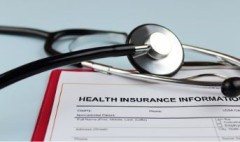
Complete guide on portability of health insurance policies
Health insurance policies now come with the portability feature in which you can transfer your current health insurance policy to a new service provider, subject to certain terms and conditions. You may look to port your policy for several reasons, such as poor service quality, a slow claim settlement process, higher premiums, and room rent restrictions.
Your NCB (No-claim bonus) amount accrued to date is also transferred along with the policy. Moreover, the waiting period served to date with the existing insurance provider is also considered and adjusted with the new company.
Here’s a complete guide to making the portability of health insurance policies clearer.
1. Eligibility and charges:
Individuals with an active indemnity-based health insurance policy are eligible for the portability process. But the porting can be done only with a similar health insurance policy.
For example, we can port a top-up insurance plan to another similar plan only. There are no additional charges for the portability feature in a health insurance policy.
2. Portability time:
The option of portability of your health insurance policy is only available at the time of the renewal. The policy must be running continuously over time, without any break-in period.
Moreover, any insured should apply for portability of his policy at least 45 days before the premium gets due for renewal. Also, he cannot apply earlier than 60 days from the renewal date of the premium of his existing health insurance policy.
3. Portability benefits:
Portability of time-bound exclusions and the waiting period already served with the current insurance service provider gets transferred to the new policy. Other benefits, such as accrued NCB (No-claim Bonus), also get ported.
4. Pending acceptance:
Suppose the health insurance portability acceptance is pending with the new insurance service provider, and your policy expires with the current insurance provider. In that case, the new insurer can request the previous one to renew the policy for a few days. They will charge a pro-rata premium for that period to extend the policy validity.
Your current insurer cannot cancel your policy until the new service provider confirms the issuance of the new policy or a specific request to your current insurer is made to cancel your policy.
If you raise a claim in this extended period, your existing health insurance company can agree to settle the claim after you pay the balance premium for that full year. Also, you will have to continue with that insurer for that year.
5. Higher SI (Sum Insured):
Opting for a higher SI or sum insured is permitted when porting your health insurance. However, the existing benefits, such as the NCB, will be the same as per the terms of the existing service provider when porting the policy.
6. Waiting period:
You need to be careful with the waiting periods offered by the new insurance company. All the terms and conditions of the new insurance company are applicable to the policy after you make the shift, including additional waiting periods, if any. However, the waiting period served under the current insurance policy will count and be adjusted with the new insurance company.
7. Group health insurance policy:
Suppose you are a part of a group policy and intend to change the service provider. In that case, you can do it by migrating to an individual health insurance policy with the same insurance company. You can then start the porting of your policy to another insurance company.
The portability of health insurance policies is a favourable option provided by the IRDAI. Being a valued customer, you have the right to receive the best services from your insurance provider. You can always port your health insurance to a better insurer if your current insurance company fails to provide adequate services.
Browse through all the available options and substitutes for your existing policy. It is preferred to opt for online health insurance, understand the terms and conditions of different options, and choose the best one for you!
Click HERE to buy online health insurance.
Disclaimer: The information provided above is for illustrative purposes only. To get more details, please refer to policy wordings and prospectus before purchasing a policy.

What are the key differences between health insurance and medical insurance
Covid-19 has taught us the importance of having a strong immune system that takes care of our health adversities. Many people have been severely infected, hospitalised, landed in emergency rooms, or have faced the unfortunate loss of their dear ones. The pandemic hasn’t been contained. But people have gotten a lot more immune to the virus.
Plus, the vaccine has been proving extremely helpful in such dire times and aid in developing a shield in your body against the virus. And many of these patients have had the privilege of holding medical insurance, which helped them and their family members cover the cost of the treatment without focusing on financial matters.
There have been multiple occasions where we all have been confused between health and medical insurance. While these terms are closely related, the benefits and coverage of these insurance policies differ. Are you someone who is confused between the two? This blog discusses all such significant pointers which will help you understand and differentiate between the two. So, let’s get started.
What does health insurance entail?
Health insurance covers all hospital costs alongside the pre-hospitalisation and post-hospitalisation expenses. This expenditure includes costs of ambulances, treatments, etc. It is considered a comprehensive insurance policy that acts as a massive benefit for the policyholders and caters to their needs in a customised manner.
What does medical insurance entail?
Medical insurance has restricted privileges one can avail of. It is directed towards specific ailments and accidents which have been specified earlier. There is an absence of options that can provide add-on coverages like health insurance. Medical insurance depends on the amount insured. You can claim the medical insurance policies in two ways: cashless and reimbursement.
1. Cashless insurance Policy: Health insurance defines a set of hospitals under its policy. Upon getting treatment in that hospital under proper supervision, the policyholders do not have to pay a single penny. The patient can avail the cashless treatment option of their health insurance against their policy number, and the hospital works things out with the insurance company directly.
2. Reimbursement: A properly planned comprehensive health insurance policy covers pre-hospitalisation charges, including ambulance costs, tests from the specified hospital, etc. This pre-hospitalisation coverage lasts anywhere from thirty to sixty days, based on the type of health insurance plans you have opted for.
Key differences between health insurance and medical insurance:
1. Medical insurance plans are pretty tunnelled and work only regarding the specified ailments. There is no pre or post-hospitalisation coverage benefit in medical insurance plans. The patient is supposed to bear the transportation charges and other expenses.
2. Health insurance policies give you several add-on coverage options like critical illness, disabilities due to accidents, etc. At the same time, no such choices are available when purchasing medical insurance plans. The critical condition includes diseases like cancer, heart attacks, etc., which carry a grave danger to your health, and their treatments can burn through your bank accounts.
3. Health insurance plans are pretty flexible compared to medical insurance policies. They provide you with the scope of reduction of the policy period, insurance premium amount after a specific duration, etc.
We hope this information gives you a basic understanding of the two types of insurance and the benefits you can avail yourself of. Given the current climatic conditions, lifestyle, sleeping patterns, environmental changes, and several other factors, health issues come without warning.
As the world progresses for the better in terms of technology, humans have backtracked when it comes to healthy living. To avoid any financial distress during such hectic and unfortunate circumstances, you must browse through various health insurance plans in India and choose the one which would suit your needs in the best ways. Health is wealth, and there is no second opinion about this.
Click HERE to learn more about the benefits of different health insurance plans in India.
Disclaimer: The information provided above is for illustrative purposes only. To get more details, please refer to policy wordings and prospectus before purchasing a policy.


